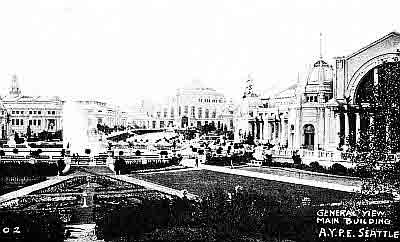
View Larger Image Here.
Transcriber's Note: To enhance the audio listener's enjoyment, captions have been added to some illustrations. The spelling has been harmonized. Obvious printer errors have been repaired.
The cover image has been fabricated and is placed in the public domain.

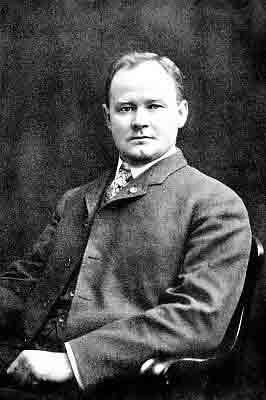
Ten years have now elapsed since the "Scandinavians on the Pacific" was published, and inasmuch as I now have the opportunity of inserting a few pages, outlining in brief some of the changes that are manifest since the publication of the book, I deem it proper to do so.
"Scandinavians on the Pacific" was my first literary effort. Some of the verses contained in the book were written in a hasty manner, hence found it advisable to rewrite them, coining them into better and more uniform metre, and later they appeared in my book of poems, "Echoes from Dreamland," which may be found in the Seattle Public Library, in the library of the University of Washington, and in the libraries of Eastern universities and colleges.
The opportunity of outlining the interesting changes that have taken place in that period, and being enabled to make the addition a part of the original book, comes to me by the generous suggestion of Mr. F. P. Searle, Manager of the Ballard Office of The Scandinavian American Bank, Ballard Station, Seattle, Washington, as it is Mr. Searle's intention to present the book to all of his Scandinavian customers and friends.
In the year 1899, while completing the history contained in the original part of this book, I could not have conceived of the wonderful changes that have been made throughout the whole Northwest, and more particularly in the City of Seattle. During the time I was writing the book, one of my very pleasant headquarters was The Scandinavian American Bank, then located at the corner of First Avenue and Yesler Way, in the building [Pg VI] that is now occupied by the State Bank of Seattle, and it is a source of a great deal of satisfaction to me, that with a few exceptions, all the officers and employees of The Scandinavian American Bank are still with the grand institution, which has developed from a very modest bank of that date, into one of the largest and most successful banking institutions in the State of Washington.
First in my mind is Mr. Andrew Chilberg, to whom I dedicated this book, and mentioned at the time that he was President of the bank, and can still make the statement that he occupies the same honored position; also Mr. James F. Lane, Cashier, and quite a number of the old time employees. Mr. A. H. Soelberg, however, is now connected with the State Bank of Seattle, in the capacity of Vice President and Cashier.
It is not my intention to confine the additional pages wholly to The Scandinavian American Bank; but the associations were so pleasant, that it naturally comes to my mind in a very vivid way, and before I leave the subject entirely, I wish to speak of John Edward Chilberg, who at the time the book was published, was known only as being an energetic business man, in common with a great many others then residing in Seattle. He is now the Vice President of The Scandinavian American Bank, and the most of his success has been to the benefit of Seattle, as it was through his foresight and faith in the future development of this city that he brought about the erection of the first sky scraper, which is the Alaska Building, and the present home of the Scandinavian American Bank, and it was through his energy that such a large proportion of Alaska's resources were obtained for Seattle.
In looking at his picture, as one of the Chilberg family, representing [Pg VII] four generations, which is found on page 48, it would indeed be a shrewd judge of appearances that could have foreseen the success that this man has made for himself, and for Seattle.
Without going into details of the many enterprises that he was identified with, which represent some of the finest improvements in Seattle, I will close my autobiographical sketch of Mr. Chilberg, by calling attention to the successful way that he managed the affairs of the Alaska-Yukon-Pacific Exposition, as President of that successful Fair, and all Scandinavians residing in this wonderful part of the United States, can feel justifiably proud of the fact that it was a descendant of their race who had so much to do with the wonderful improvements that have been evidence in Seattle during the past ten years, and it is indeed a pleasure for me to place his picture at this day and date along with those of other prominent Scandinavians.
One of the most wonderful changes in Seattle is the gigantic regrade work, which in a short time will so change the topography of the city, that residents who left the city ten years ago, would on their return, have hard work in locating old land marks. I understand that to take the United States as a whole, this city is one of the best advertised cities west of Chicago, and one cannot visit any other city without being made aware that the majority of the people know all about Seattle. Of course these reports must be of recent date, as the "Alaska-Yukon-Pacific Exposition" was the real advertising factor, as it certainly was the most grandly arranged, and most successful fair that it has ever been my privilege to see.
As I look through this book, written so many years ago, I am made aware of the old time citizens who have been called [Pg VIII] Home, yet feel that all who have not had opportunity to read the early history of the Scandinavians in this part of the country, will derive a great deal of pleasure in being able to refresh their memories, and to those Scandinavians who have recently settled in this part of the country, the book will no doubt be the means of many re-unions of friendship formed in other parts of the world.
In concluding this short sketch, permit me to add "Greetings from Puget Sound," a poem which I wrote some months ago, and which was published on a post card, and copyrighted by The Scenic Library Company.
GREETINGS FROM PUGET SOUND.
ERRATA.
Page 33, sixth line from bottom, should be its briny breast, not her briny breast.
Page 46, third line from bottom, should be slaughter, not staughter.
Page 68, under the cut should be Dr. Eiliv Janson, not Eliiv.
Page 86, thirteenth line from top, should be the 31st of May, 1889, not 1894.
Page 93, tenth line from top, should be examen, not examin.
Page 115, third line from top (in some of the copies), should be successful, not sucsessful.
Page 132, second paragraph are too many commas.
Page 134, third line, second paragraph, should be Solor, not Sotor.
Page 196, under the cut (in a few copies) should be Fairhaven, not Fairhavan.
Page 199, twelfth line (in a few copies) should be reconnoitered, not reconnitered.
Page 208, second line from bottom, should be legislature, not legislation.
BY
THOS. OSTENSON STINE, B. S.
P. O. Box 599, Seattle, Wash.
AN EVENING ON PUGET SOUND.

TO
ANDREW CHILBERG,
Consul for Sweden and Norway and President of the Scandinavian American
Bank of Seattle,
As a Token of Respect for Your Friendship and Your Integrity of Character,
I Dedicate this Volume.
Thos. O. Stine.
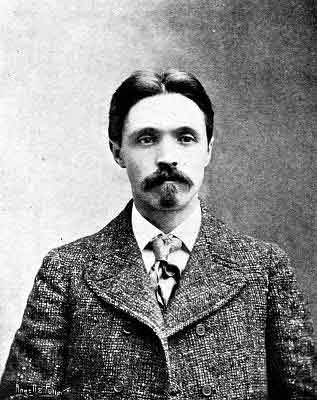
On solicitation of prominent Scandinavian-Americans, a year ago, I undertook to write a volume or two, entitled, "Scandinavians on the Pacific." At the launching of this idea an untold number rallied around me with sweet tongues, but many who pretended to furnish historical data fabricated delusive smiles of impertinent selfishness. Others, however, have been frank in ushering kind assistance. The author is indebted to the following gentlemen for willing advice and information: John Blaauw, Editor of Tacoma Tidende, Tacoma; George Bech, Author of "Hæng Ham," etc., Seattle; Rev. T. J. Moen, Fairhaven, and N. P. Leque, Stanwood.
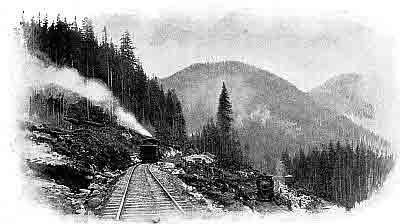
| Introduction. |
| Chapter I. |
| The Pacific Coast. |
| Chapter II. |
| The First Scandinavian Pioneers. |
| Chapter III. |
| Scandinavians in Seattle. |
| Chapter IV. |
| Societies—Press—Prominent Citizens—Churches. |
| Chapter V. |
| Scandinavians in Ballard. |
| Chapter VI. |
| Scandinavians in Tacoma. |
| Chapter VII. |
| Societies—Press—Prominent Citizens—Churches. |
| Chapter VIII. |
| Scandinavians in Everett. |
| Chapter IX. |
| Scandinavians at Stanwood. |
| Chapter X. |
| Scandinavians in Stillaguamish Valley. |
| Chapter XI. |
| Scandinavians at Cedarhome. |
| Chapter XII. |
| Scandinavians in Skagit Valley. |
| Chapter XIII. |
| Scandinavians in Bellingham Bay. |
| Chapter XIV. |
| Scattered Scandinavian Communities—Poulsbo and Other Places. |
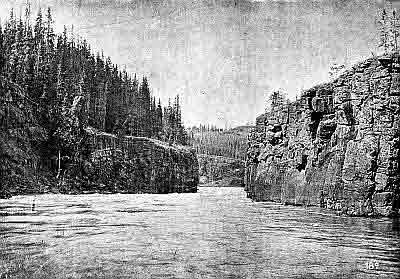
| PAGE | |
| Alaska-Yukon-Pacific Exposition, Seattle | III |
| Anderson, C. G. W. | 76 |
| Anderson, J. F. | 184 |
| Anderson, Graebert | 94 |
| Anderson, Oscar | 78 |
| A Group of Representative Ladies | 12 |
| Arntson, J. M. | 120 |
| A Scene of Pioneer Life | 39 |
| A Rustic Bridge | 106 |
| Another Scene of the Wenatchee | 29 |
| A Puget Sound Cedar | 23 |
| A Miner at His Cabin | 32 |
| A Musician on Skagit River | 194 |
| A Scene in the Washington Woods | 31 |
| A Scene in the Harbor of Seattle | 51 |
| A Scene in the North Pacific | 10 |
| An Island near Whatcom | 25 |
| Bank, Scandinavian American | 53 |
| Bennie, Jr., D. G. | 153 |
| Bech, George | 92 |
| Blaauw, John | 129 |
| Bull, Prof. Olof | 110 |
| Chilberg, Andrew | 4 |
| Chilberg, John Edward | IV |
| Christensen, Lars and Wife | 204 |
| Crogstad, Andrew N. | 186 |
| Crogstad, Mrs. Wilhelmina A. | 187 |
| Coltom, M. O. | 155 |
| Church, N. D. Baptist | 99 |
| Church, N. D. Lutheran | 95 |
| Church, Swedish M. E. | 96 |
| Church, Swedish Baptist | 98 |
| Church, Stanwood, N. D. L. | 144 |
| Eggan, James | 90 |
| Engquist, Frank | 104 |
| Enger, T. T. | 135 |
| Elvrum, L. P. and Wife | 137 |
| Everett in Its Infancy | 139 |
| Fishing in Bellingham Bay | 198 |
| Foss, Louis | 191 |
| Hanson, L. G. and Wife | 180 |
| Hansen, Hans | 84 |
| Hals, John I. | 164 |
| Hals' Shingle Mill | 163 |
| Hevly, E. A. | 161 |
| Hallberg, P. A. | 80 |
| Janson, Dr. Eiliv | 68 |
| Janson, Dr. Ivar | 6 |
| Johnson, Iver | 159 |
| Johnson, Rev. John | 97 |
| Johnson, John | 102 |
| Knudson, Knud | 149 |
| Knatvold, H. E. | 112 |
| Langland, S. S. | 72 |
| Leque, N. P. | 141 |
| Lindberg, Gustaf | 122 |
| Logging Family Standing on a Cedar Stump | 167 |
| Lundberg, A. | 74 |
| Mining Scenes | 34 |
| Moldstad, N. J. | 193 |
| Mt. Baker | 196 |
| Mt. Rainier | 108 |
| Mt. Index | 21 |
| Morling House | 182 |
| Nelson, N. B. | 63 |
| Nicklason, G. | 175 |
| Nogleberg, John | 82 |
| Nogleberg's Studio | 81 |
| Orphans' Home | 207 |
| Ox Logging | 133 |
| Pacific Lutheran University | 132 |
| Prestlien Bluff | 166 |
| Pioneers Among Wild Beasts | 169 |
| Quevli, Dr. C. | 114 |
| Ranch, Jorgen Eliason's | 202 |
| Residence of Olaf Rydjord | 151 |
| Residence of N. M. Lien | 150 |
| Rosling, Eric Edw. | 118 |
| Rynning, Dr. J. L. | 116 |
| Rude, H. P. and Family | 59 |
| Rialto Block | 64 |
| Stanwood L. M. Sangkor | 145 |
| Stanwood Creamery | 152 |
| Samson, S. | 124 |
| Sandahl, C. N. | 70 |
| Sandegren, T. | 131 |
| Steamer Advance | 205 |
| Soelberg, Axel H. | 66 |
| Skagit River | 18 |
| Snoqualmie Fall | 27 |
| The Cedarhome School | 172 |
| The Norman School | 165 |
| Thompson, S. A. | 147 |
| The Baltic Lodge | 86 |
| The 17th of May Committee | 88 |
| The Chilberg Family | 48 |
| The Wild Wenatchee | 28 |
| The University of Washington | 36 |
| Walters, Carl O. | 178 |
| Western Washington Native Snowshoe Hare | 181 |
| Wonderful Scene on the Great Northern in Cascade Mountains | 8 |
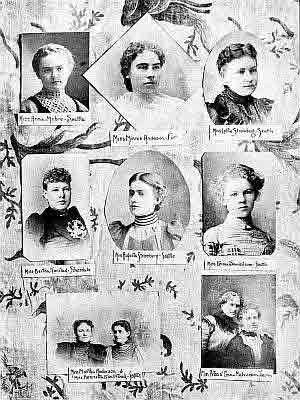
The author does not aim to lift the Scandinavians into an air of ungained merit, he does not aim to clothe them with undeserved encomium, but seeks to paint their dues in a straightforward way, thoughtless of sailing the sea of hyperbole, or entering any strait of unearned exploit.
In order, however, to give the reader a clear conception of the spirit, the intrepidity, the characteristic worth of the northern peoples, my pen cannot refrain from plowing into the annals of the past. History is plain and authentic on the subject, and the same chivalric blood ebbs through the veins of the Vikings today as of yore. They have shared and do share the burdens of adventure, discovery and colonization. [Pg 15] They have nurtured their sons and daughters with patriotic zeal, and unfurled to their love the folds of freedom. They have braved the foam-crest waves minus compass and sympathy—stars of night and sun of day guided them over the traceless billows. Their dauntless sails have wafted in sun and storm from shore to shore and woven together distant climes.
From the dawn of navigation and soldiery the Scandinavians have evinced skill and dexterity, filled with a whim to roam, see and conquer. They were, perhaps, sometimes rough in their daring expeditions, but always actuated with a will to plant the scepter of liberty and to raise the standard of civilization.
In 860 the valorous Naddodd discovered Iceland, and fourteen years later a republic form of government was established, which flourished four centuries. In 984 Erik The Red discovered Greenland, and in the name of his native country, Norway, took possession of the frozen territory, and unfolded to the breeze the banner of liberty.
"To the West! To the West!" thought Leif Erikson, son of Erik The Red, "spite waves and breakers," and in the year 1000 pointed the bow of his bark for the shore of America, landed at Helluland, now known as Newfoundland. He reconnoitered the coast as far south as Massachusetts, and christened the New World, Vinland.
Not here do the Vikings stop. In 1002 Thorwald Erikson set sail for Vinland, spent three years exploring the [Pg 16] green-clad banks of New England with zealous desire to unveil to his countrymen the characteristic features of the new possession. In a collision with the Skrællings (Indians) his precious life was blown out, the first European to succumb to the arrows of the red race.
Not here do their voyages for the New World cease. The sagas plainly picture their pilgrimages across the howling waste for Vinland in 1005, 1007, 1011, 1121, 1347.
True, the Scandinavians have been heroes on sea, but no less so on land. King Gustavus Adolphus, of Sweden, poured his life blood on the battlefield of Lutzen, not for military glory, but to liberate millions of innocent souls from the fire of tyranny, the poisonous hands of the chief of superstition, the narrow-minded Philip II., of Spain. He was not only a military genius but the father of his people, a benefactor of humanity.
In 1638 a company of Swedes colonized in the New World, who made the hills and forests of Delaware ring with the music of their picks and axes. As years rolled by emigration started from Sweden, Norway and Denmark. The wilderness of America was their object, the building of homes their love. They braved the interior, fought the lion and the bear, conquered the frowning forests and subdued the spreading prairies. First huts of logs and sods, then quaint dwellings rose to mark their energy. Fields and gardens smiled, school-houses reared the air, and happy lads and lasses pranced their way to school [Pg 17] to drink freely from the fountain of knowledge. Home, sweet home echoed from rocks and trees. The frontier was their chance, and thither they steered their lots. They knew how to swing the axe and use the hoe, climb mountains and make themselves contented in the most hazardous exposure.
What to them the soft pillow? when a stone was near at hand. They slept under the blue sky and drank health from the floating clouds. A home for my son and daughter, or my sweetheart, gave them fresh courage. Not only a home, but a pleasant home in a congenial clime, where the heaven smiles serenely, where the rose-bud bursts and thrives the year round. Thunder and cyclones had shaken their tranquility. More peaceful air, tired of the friction and disagreement in the upper regions, and fire that seems eager to eat the whole firmament. Away from the boisterous thunderbolts which make it a business to blast and burn every cloud. "To the West! Sweet Westland!" rolled in their souls, where the air is pure, where the birds sing, where the scenery is grand.
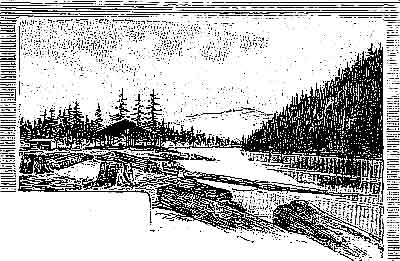
High and noble stands the Rocky, looking downward, where jeweled brows hang, where silvery waves make music on the deep, or the sea maid shakes her streaming locks. As early as 1513 the brave Balboa hurled his exploring eyes over the watery waste and in the name of Spain declared the discovery of the mighty ocean. But, alas! the valorous Spaniard received only scoff and scorn for his adventure and hardship, and at last the cold world saw fit to lead him to the judgment block for the unknown depth beyond.
A later date, in 1592, Juan de Fuca, a Greek pilot, in the service of Spain, discovered the beautiful strait which bears his name, the gateway to the picturesque Puget Sound. In 1789 Captain Kendrick, an American explorer, was reconnoitering along the Pacific coast, entered the Strait of Fuca, steered his boat into the Strait of Georgia and Queen Charlotte Sound, and depicted the characteristic features of the land-locked waters. In 1804 the United States government sent the Lewis and Clark expedition across the Rocky to ascertain more minutely as to the climate and the feasibility for settlement.
When the country was explored, and a sprinkling of pioneers had spread themselves in the most favorable localities, tidings of the complication between our government and Great Britain reached them. War clouds were hanging [Pg 20] in the air prognostic of determining the ownership of their terra firma. An amicable settlement, however, was brought about and the present boundary between Washington and British Columbia was fixed.
A petition was sent to Congress praying for closer relationship in the Union, and in 1853 the Territory of Oregon was organized. The flux of immigration fast settled the attractive sylva on the Sound and the rolling prairies east of the Cascades. The Territory being too large, and the country north of Columbia was sliced off and made to struggle for itself. The promoters of the scheme were vigilant and got things to move their own way, and after all, they didn't do anything worse than to give this vigorating child of Uncle Sam the ever-cherished appellation Washington.
MY WASHINGTON.
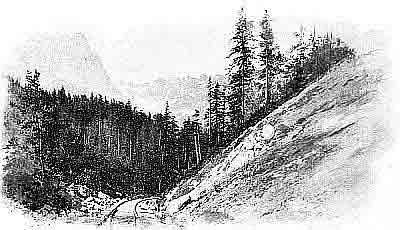
The scenery of Washington is grand and inviting. The Cascade runs through the bosom of the state, cutting her in twain, and throws his rugged spurs into Oregon and California. The majestic Rainier rears through the clouds to a height of 14,444 feet, wearing a hood of perpetual snow, which changes to a verdant fringe as it runs downward, clothing his feet with evergreen. Mount Adams has pushed his head upward 12,902 feet, and Baker has reached an elevation of 10,814, while St. Helen stopped 9750 feet above sea level.
To the westward is a less conspicuous attraction, the Coast Range, which skirts the ocean and varies in height from 3000 to 4000 feet. Between these mountain ranges sweeps a fertile basin, carpeted with an unparalleled forest, fir, cedar, spruce and hemlock rise skyward to a skeptical [Pg 23] giddiness. Some stretch their forms 300 feet into the air. Logs are piled upon one another, sleeping like angry mammoths at the feet of gigantic trees. The more tender offsprings shoot up between these lazy monsters, and some take delight to grow on their decaying frames.
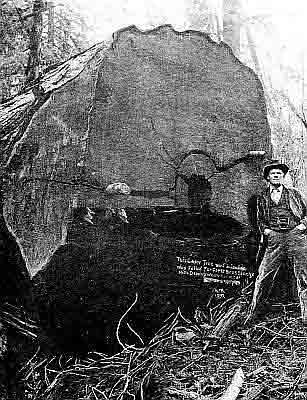
The fjords of Norway are sublime, and Puget Sound is equally so. What can be more soul-stirring and soul-inspiring than a merry sheet of water rippling for hundreds of miles into a land of verdure, making sweet music day and night? What can be more angelic and soothing to the soul than the songs of the waves? Where can you find more poesy than in the pearl-set crests rolling like melted gold upon gilded pebbles? A clittering, clattering steal through the air, even in the calm of night dulcet strains come to cheer the ear. A soft whisper seems to spring from every flower. The forest is alive with melodies, hills and mountains echo back the harps of the deep.
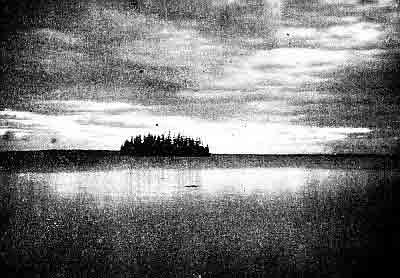
Rivers and falls are no less sublime than the Sound, and compare in grandeur with the famous streams and cataracts of Switzerland and Scandinavia. The Columbia ranks with the most picturesque rivers in the world, being of great value to commerce, fleets of steamers ride on its bosom day and night with merchandise from foreign climes, and grain, fruit and other produce raised west of the Rocky. Snoqualmie, Snohomish, Skagit and others are also navigable and invite the attention of wonder-seekers.
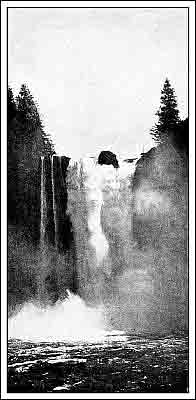
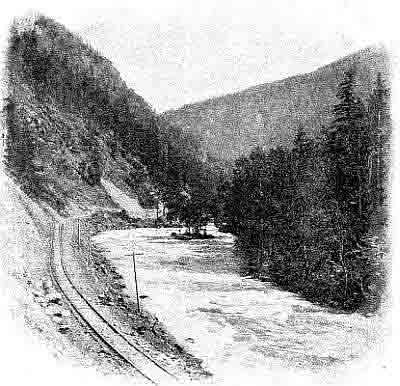
Snoqualmie fall is one of nature's masterpieces, and bespeaks grandeur and sublimity. The water shoots into the air, tumbles down a royal precipice, whirls, foams and splashes, fills heaven with thunder and the soul with awe and [Pg 29] admiration. The Tumwater fall is likewise grand and awe-inspiring, stunning in music and bewitching in scenery.
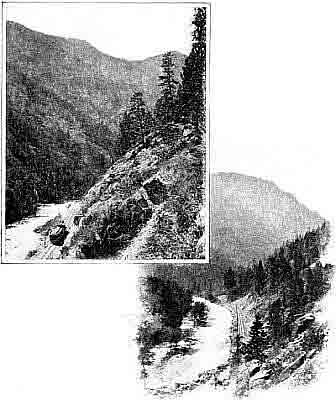
Storms seldom visit the Pacific, and thunder rarely finds a rich medium in the balmy clouds. But, terror! when a storm is propagated on yonder deep, and sets the ocean boiling and shivering up shallow bays, and springs into the forest like an unchained demon, then the whole heaven shakes and trembles. Firs and cedars tumble like dead giants, knocking [Pg 30] each other to the ground in the fashion of heartless heathens. Blasts upon blasts swell through the air and roll along the mountain ridges not dissimilar to Jove's chariot.
Ay, you speak of awe and fright when a prairie fire gets sway on the Central Plain, but when the guest of good and evil gains access to the Washington forest in the month of August or September a hell is witnessed similar to that painted by ranting trumpeters. Flames rise skyward and with the aid of winds set the trees flaring and howling as in the clutches of a thousand devils.
The fertility of the Pacific forest is something incredulous, the quantity and quality of lumber produced are astounding to all not familiar with this country. Even a conservative estimate would make many curious speculators drunk with figures.
In the State of Washington forests spread over thirteen million acres of land. West of the Cascades is a stretch of ten million, clothing hills and dells from Canada to Columbia river with valuable fir, cedar, spruce, pine, hemlock and tamarack, while on the east side three million acres of forest land are scattered along the rivers and mountain slopes.
Saw mills and shingle factories are being kept busy the year round. More than one billion feet of lumber are turned out annually and shipped to all parts of the globe. The shingle industry is something phenomenal. Factories are whistling and piping everywhere throughout the cedar districts, and thousands of men find lucrative employments.
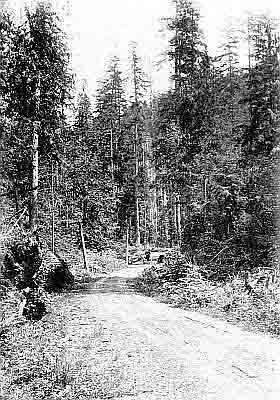
Mining is an important pursuit, rugged brows smile with independent richness. Moss-bearded ledges of the precious metal run into the heart of the Cascades. The Index districts teem with mineral wealth, and Lake Chelan shines with doubtless yields. Iron ore rests in the bosom of the Sound country from the green feet of old Rainier to the dashing waves of the Pacific. As you cross the divide for Eastern [Pg 32] Washington, you find paying veins running in different directions. Coal is a natural consequence, which in no manner puzzles the minds of geologists. From days of yore luxuriant vegetation has robed plains and valleys to impenetrable density. The death of rich forests has built beds of astonishing thickness, and the formation of coal has resulted to a marked degree.
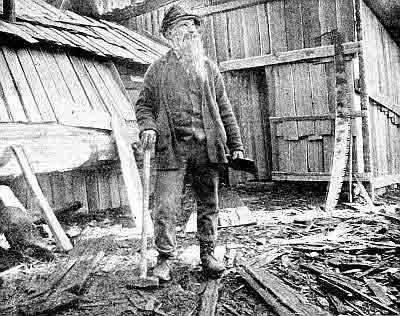
Agriculture and horticulture invite attention. The rolling prairies between the Rocky and the Cascades are especially adapted for the raising of cereals. Wheat yields from 50 to [Pg 33] 75 bushels per acre, oats from 100 to 125, rye from 60 to 80. Irrigation has been practiced with wonderful success around Wenatchee. The feasibility of applying nature itself is remarkable. Here and there meander silvery streams of clear water, which are made to spread over fertile tracts of land at any time, and to any part wanted. No longing for showers to quench and sweeten the thirsty soil bothers the farmer in this section. Irrigation is so easily practiced, and the crops thus raised are so enormous, may it be grain or fruit, that the eastern agriculturist cannot conceive our natural advantages. Why linger on the hungry prairies of the east, freezing your lives out, when opportunities like these are extended to you? Here you can get a pleasant home, for a small trifle, where the air is mild and soothing, where the soil is rich and easily cultivated.
The Sound country is equally productive. Ay, inexhaustible. The Washington fruit is known the world over for quality and quantity. Magnificent orchards adorn every farm, and the smaller ranches, too, enjoy the presence of wealthy apple, pear and plum trees.
When you throw your eye upon Puget Sound, and behold the fleet of fish barges, rolling upon it's briny breast, a reminiscence of the coast of Norway steals into your soul. Cohorts of men, mostly Scandinavians, resort to the waves for subsistence. Herring and salmon throng the water in rich abundance. Shoals of the latter race along the shores, fighting their way up streams to spawn. Some become savory prey for bears, cougars and wolves, others die a respectable death, or return to their natural abode—the ocean. The halibut plays master among the smaller species, and grows fat at their diminution. He cares nothing for streams or shallow bays, but gambols friskily amidst the salty billows.

[Pg 35] All the gold and silver in the bowels of the earth, and all the glittering nuggets shining on her bosom did not ruffle the serenity, or affect the wonted vagrancy of the Indians. To them the forest was a nuisance and the saw mill a scarecrow. The singing brook was worthless and the rolling river valueless, save as mothers of trout. They had no love for higher aspiration, no instinct for advancement, no aim to better their condition, no foresight to provide against the pitiless influence of cold or heat, no sagacity, no frugality, no thought of tomorrow, no pile of subsistence for a rainy day or helpless age, troubled their minds. Life was to them a ceaseless dream of nothingness. Superstition was their god and pride, reason a casual stranger which rooted not in their souls.
What has changed this sad drudgery of the Indians to a social commonwealth? What has spurned the fiend of superstition to a shameful death? What has invited reason and common sense to dwell peacefully in our hearts? What has lifted the world from the thorny plane of priesthood? What has wrested from the priestly hand the scepter of government? Our forefathers knew it and provided for its development. The pioneers of Washington had tested it, and prescribed it for the coming generations. The log schoolhouse rose to [Pg 36] their sweet recollection of childhood days, then a frame building, then a brick edifice. High schools were established, a state university was erected, normal schools were founded, an agricultural college and school of science was built.
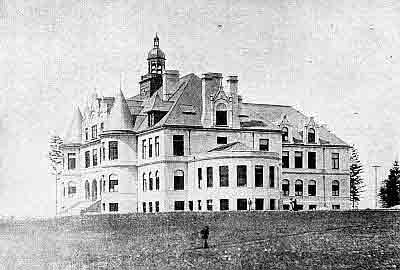
No class of people or nation deserves the title, cosmopolitan, better than the Vikings. Their names mingle with the history of England, France, Russia and Italy, and in the Western Hemisphere we find them all over. To trace up the first Scandinavian that touched the shore of Washington is difficult, if not impossible. No doubt but Scandinavians made stoppings along the coast on their fishing expeditions to the north before any white man had dreamt to pin his hopes to the North Pacific. And it is probable, too, that some adventurous spirit of Viking blood had been washed with American polish, and passed as a Yankee in the Lewis and Clark expedition. It is safe to conjecture, however, that some straggler from the sea-beaten shores of Scandinavia shared the sufferings with the trappers of the Hudson Bay Company, or partook of the hardships in John Jacob Astor's expeditions for the mouth of Columbia river. These companies were made up of heterogeneous crews. The mercurial French Canadian, the acute Yankee, the jolly Englishman, the stern German, joined hands for the furfields, and it seems [Pg 38] reasonable that some hardy Scandinavian, too, was likely to abandon his fireside, turn his back on civilization, and yield consent to a more romantic life.
A motley combine known as the Russian Fur Company had established an emporium on the Pacific coast, and a number of trading posts in the interior, ere the close of the eighteenth century, and it is authentically evidenced that Scandinavians and Finlanders constituted the minor force of the regiment of trappers and navigators. Let it suffice to say, however, that these brave adventurers regardless of genealogical type did much to sow information in the Old World of the evergreen land west of the Rocky; and suffer it to be known that the probability is that some intrepid Scandinavian sacrificed his life in search for peltry, and that his bones rest in peace beneath the green turf in the Pacific forest. This brings us to the influx of permanent settlers.
Mrs. Frederic Meyer.—One of the first white women that breathed the air of Pierce county was Mrs. Frederic Meyer, a Norwegian by birth. She left her mother's hearth in Toten while a tender bud, fresh as a rose with blooms of white and purple blushing on her cheeks. Few women are of true romantic nature, their hearts, as a rule, are attached to social affiliation around the fireside, but Mrs. Meyer figures as a typical exception. Those that have known her well speak with kind tongues, pronouncing her a model of her sex, chivalric in spirit, and brave, but warm at heart. According to reliable information obtained in Tacoma, she lit her feet [Pg 39] on the green-trimmed shore, where the City of Destiny now looms, forty odd years ago. She was married to an estimable German.
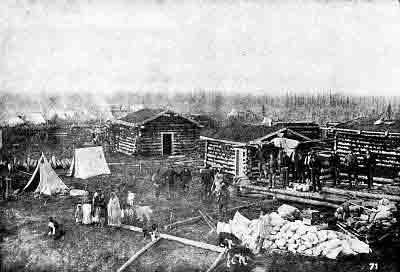
[Pg 40] Hood's Canal Anderson.—Hood's Canal Anderson was a peculiar composition of strange fancy. He was born in Denmark, and from childhood showed an insatiable passion for the sea, which ripened into irresistible lust. While a lad of vernal years he left his native seat to be dashed on the briny waves from port to port. He saw the crystal ice of Lofoten, the huge glaciers of Greenland, the thirsty greens of India, the foul bogs of China, the flowery vales of Japan, the rich gold fields of Australia, the teeming meadows of New Zealand. He was tossed from continent to continent, from island to island. About forty-five years ago he drifted ashore near Port Discovery, and under veil of night put wings to his feet for the forest. The fascinating aspect of the country and the aromatic sylva poured streams of delight into his soul. As he stood in the early morn, gazing around in mingled awe and admiration, he was surrounded by a red race, who, at first, gave vent to the horrible dilemma of converting his heart to ashes or treating him as a slave, but his ingenious demeanor turned their sanguinity to laughter, and Anderson became their curious jocularity which melted to favoritism. He strolled with the train of vagabonds alternately fishing and hunting up streams and canoeing the Sound. Thus ten years were dragged out of his longevity without mingling with white men.
His longing for civilization vanished little by little, and the life of celibacy settled heavily on his heart. He was a friend of the chief and an admirer of his daughter, and it took only [Pg 41] the big canoe to seal the bargain. Anderson was rather long-headed for the red heathens, and got the best of every deal. He was now the possessor of the biggest canoe, save the royal ship, and was looked upon as independently opulent. Only a word would change his life for better or worse. Finally he took the delicate step and offered the huge dug-out in trade for the young princess, which was accepted with loud eclat.
The ban of the nuptial day was made public. The bride spared no tiptoeing to make it highly royal. First was a coat of red paint, then purple, tinged with green. A carefully administered shampoo of oil followed, then a crands of wild flowers was critically twined to her wealth of black locks with a few quills set on end in the most confused bewilderment. Of course, Anderson did not fancy the odorous coat of his intended, nor her pert of etiquette, but being as those things were incidental to the dynasty, he darted approbation with his blue eyes, thinking, "Costume is not permanent."
From this time the chivalric Dane became a leader. He piloted the royal squadron to Hood's Canal, where he squatted on a piece of land, hence the sobriquet—Hood's Canal Anderson.
He became attached to his wife, and she reciprocated with equal depth of conjugality, and shaped her costume to meet his liking, yet Uncle Sam pried into their warm nestling by passing a law to either separate or marry according to his code. Of course, Anderson had to marry his wife the second time, which he did like a loyal citizen. He took his corpulent queen, [Pg 42] placed her in the stern of the big canoe, and paddled to Seabold, where they were united in holy ties by Harry Shafer, Uncle Sam's matrimonial agent. Anderson bears the honor of being the first white man on Puget Sound concubined to a squaw in accordance with the laws of the United States. He was industrious and elevated compared with his station, turned a wooded bit of ground to a flowery garden, and in a corner, beneath a weedy sod, he rests unsung.
Peter Friberg.—Peter Friberg, like Hood's Canal Anderson, has walked the highway of frontier trials. He was born in Sweden, but when a mere youth sought the waves. After years of trying experiences he found himself on Puget Sound, among the floating Flatheads, about the same time Anderson landed, but perchance drifted off with another flock of red skins, consequently the two contemporaries were ignorant of each other's wanderings till later years, when they accidently met and shook hands.
Peter Friberg also threw his heart to a squaw, and with her he barged along the shores making depredation on salmon and halibut, finally pinning his future to a happy point running into the bosom of the Sound, near Salmon Bay.
Martin Toftezen.—About two-and-forty years ago, a son of Norway anchored his canoe on the north side of Whidbey Island. His name has been pinned to its soil among the first on record. He was a pioneer of heart and courage—chivalrous Martin Toftezen. He had drifted around the Horn on a ship, and was tossed into the mouth of Puget Sound, where the [Pg 43] breath of the deep calmed to a gentle zephyr, and the wings of speed flapped in disconsolation. The bark was dashed ashore by the angry billows, caused by the agitating tide, and Toftezen stood in a transport of mingled awe and perturbation. Nature was grand, enchantingly sang the ripples up the fascinating arm, and mad in grandeur reared the snow-capped peaks, flinging smiles of welcome. "Why reject the poetic landscape? Nature's sweetness will smite the blue forehead of dreary solitude." These thoughts rolled in his fancy, and up the Sound he paddled, and settled on the green tail, where he wore out his life.
Peter Andrias Peterson.—No man on the Pacific coast ever endured more hardships than the personage in question—Peter Andrias Peterson—who, about a year ago fell prey to an incidental injury, and was carried over the stream for the unknown sea beyond.
He was born in Denmark, 1828, and cast on the cold billows to struggle for himself at the age of fifteen. A few years later he stepped ashore in England, where he took a course in navigation to enable himself to cope more successfully with the foam-crest surges. He embarked a ship for India and Australia. In the latter place his mind was engrossed with exciting reports from the gold fields, and thither he flew, a fugitive of the sea. Success smiled on his brow, and wealth crowded into his hands; but riches easily won are not highly treasured. In a wildcat scheme he sunk his fortune, and before the dawn of a fresh week his thousands were in the hands of others.
[Pg 44] This catastrophe, brought about by sheer mishap, drove him back to the sea, and, in 1859, landed at Victoria, British Columbia. A buoyant spirit, though wounded with ill-luck, will soar to felicity and breathe vigor on green fields. Peterson was delighted with the verdure that greeted his vision, and took a canoe excursion around the Sound. On returning to Victoria, he was struck with the gold fever which raged desperately in the Cascades and Sound country. He compromised with his floating thoughts, bent his energy on a prospecting tour, and in two days flocked together sixteen men. In his customary adroitness he took command of the little army of gold seekers, and bore into the forest, but when two hundred and twenty-five miles from Victoria, thirteen of them lost courage and returned to the city.
Peterson and his two companions proceeded up a small stream for some days, and to their astonishment, one gray evening, fell upon four white men actively engaged in picking gold nuggets. They staked out a claim, glimpses of luck commenced to play on their cheeks, but died ere a fortnight had gone to rest in the pensive dream of growing forgetfulness. Their ration was getting low, and to save themselves from falling victims to pitiless starvation, they raked together their pelf, and returned to Victoria.
In the spring an English syndicate mustered a regiment of fresh recruits, a man of spirit and agility was wanted to head an expedition into the mountains, and Peterson was offered the responsibility, as he had already gained fame as a daring adventurer. [Pg 45] It was suggested to seek a new field, and a guide was secured to usher them along. First, however, was to hunt up an easy pass, and to accomplish this, a knot of fourteen men, headed by Peterson, was dispatched into the wilderness. They fought their way through murky vales and climbed moss-bearded brows, the day sunk behind the horizon and night wrapped them in darkness. Thus they continued; but, alas! the guide disappears. The others rambled through treacherous woods, thoughtless of any hazard. Hours were consumed climbing over angry logs and chasing through witching dingles, but the guide was neither heard nor sighted.
The thirteen brave were lost in the forest where gloomy giants stretched into a ghastly stillness, broken only by deceiving owls sailing over their heads on disconsolate wings. For eight days they wandered without a morsel to eat; grouse and pheasant were drumming through the air, and deer gambolled in listless droves, but only to whet their keen appetite. Their fire-locks were empty like their stomachs.
After darkness comes sunshine, and to their exhileration tumbled into an unknown mining camp. They were received as friends and immediately treated to a savory table. One of the unfortunates being so greedy for the palatable viands that he rose in the night to gormandize a heap of pan-cakes, left from supper, and shortly after fell juicy feed for the grave and worms.
A new plan was formulated, two Scotchmen were sent back to Victoria for provision, and the others remained at the [Pg 46] camp. A couple of months elapsed, and twenty-four miners halted at the gold-seeking hamlet where the unlucky retinue joined them.
The company, now numbering thirty-four, resumed their pilgrimage in an easterly direction for nearly two hundred miles. The landscape swept up into jutting brows and gray-headed peaks, and the forest fringed into a scabby shrub of hungry appearance. The change in nature cast cold currents into their souls, but soon melted into delight. A beautiful stream grated their ears, and thither they flocked.
Nature was now sweetness and grandeur, and fortune seemed to smile from every leaf and twig. The blue heaven hung over them, here and there dipped with shades of purple; the sun sent down his wealth of beams to kiss their hardy cheeks; and the clear stream was busy making music as it tumbled down jeweled precipices to swell the deep. They drank hope and aspiration from the poetic environment, and each, as a loyal soldier, embarked his assigned duty with happiness in his heart. Gold was not doubted, before a month had slipped away, the precious metal glittered in rich veins.
A frontier mining camp, in the heart of savages, is a continuous scene of sunshine and storm, of joy and despair. Precaution must be the watchword of every individual, early and late; a careless step might betray them to the altar of cruel slaughter. The book-keeper had been appointed custodian of the fire arms, who, in a thoughtless way, or to satisfy his greed, bargained the ammunition to the Indians. Oh, terror! [Pg 47] the happy camp was turned to a lake of blood. One sad night, in the early part of winter, the savages stealthily fell upon the camp, and like thieves entered the lodges, pointed their ill-gotten fire-pieces against innocent breasts, and quenched the light within.
Peterson and two Scotchmen escaped the murderous fire, naked they ran, not dissimilar to deer over the snow, the former dashed into the river where ten thousand pug devils, sitting in its bosom, bleeded his feet, and the latter chased down the bank of the stream as in an elopement from hell. After a month of severest suffering and hardship they reached the gate of safety—Victoria—blood-stained and scraggy, hardly able to combat the icy angel of death. The gold fever had ceased to ebb through their veins. The two Scotchmen returned to their dear fatherland, and Peterson built a boat and sailed for Stillaguamish where he sleeps in peace under the green turf, three miles from Stanwood.
Fred Landstone.—In Swedish, Fredrik Landsten, a man of nomadic spirit and fine intellect, was born in Sweden, and in the spring of manhood ascended the horizon of sea-faring exploits. In 1860 he landed at San Francisco, and a year later stept ashore at Port Discovery, Washington. A score of years on the rolling brine had changed his mind for terra firma. He resorted to logging camps and saw mills, working hard until 1876, when he retired on a piece of land three miles from Poulsbo, where he still resides, slowly wearing out the balance of his years.
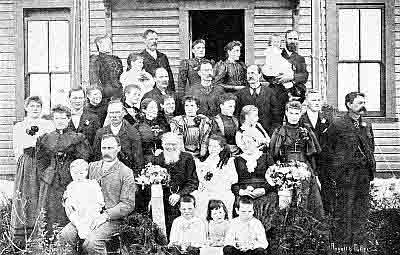
[Pg 49] Charles John Chilberg (not John Charles as shown under the illustration).—White with a wealth of snowy locks, and seven-and-four scores of years hanging on his back, yet nimbly he frisks about on his beautiful farm at Pleasant Ridge, Skagit county. This aged pioneer of unusual endurance and grit, keen intellect and warm soul, was born in Halland, near Laholm, Sweden, 1813, came to America, 1846, and located in Iowa. In 1860 he visited Pike's Peak, Colorado, and in 1863 left his family again, a loving wife and children, for the West with a view to find a more congenial clime. For some time he traveled in Montana, crossed the Rocky, and came to Puget Sound, 1865. The sweet-scenting forest and the balmy heaven awakened his love for perambulation of the Pacific, from British Columbia to the Golden State. He resolved to make his future abode west of the Cascades, and in 1869 returned to Iowa to remove his family to Washington, arriving at Pleasant Ridge the following spring.
Mrs. Charles John Chilberg and three of her sons, Joseph, John H. and Charles F., came to the Pacific in the spring of 1871, and Isaac and B. A. a few months later. James P. Chilberg has climbed the horizon of pioneer adventures. In 1859 he landed in California, in 1864 traveled in Oregon, and in 1870 beheld the rippling Sound and the Washington forest. In 1872 Nelson Chilberg took a survey of the Pacific and [Pg 50] three years subsequent his brother Andrew threw his eyes upon the mighty ocean.
Andrew Nelson.—A jolly fellow, familiarly known as Dogfish Nelson, was among the first Scandinavian pioneers. He was born in Denmark, 1832, and landed as a sailor at Port Ludlow in 1867. Like many others he was attracted by the country, and to drive away monotony took an Indian woman for wife, as white women were almost unknown on the coast at that time. Nelson has encountered many obstacles in his cruising among the red skins and fierce brutes, but always managed to play the hero. He has been industrious and convivial, and a flowery nest in Brown's Bay bespeaks his rank.
Hans Hansen, a Dane, who resides at Alki Point, near Seattle, has earned a footing among the early Scandinavian pioneers. His years on the Pacific reach pretty nigh two scores. Knut Knutson, a native of Norway, and also a resident of Alki Point, came to Puget Sound over thirty years ago, and has passed through days of sun and storm. C. E. Norager, likewise of Norse birth, places his disembarkation on the Pacific about forty years back.
Seattle, the metropolis of Washington, and the busiest city on the Pacific coast, has a romantic history, as well as a history of thrift and progress. Thirty-five years ago only a few log cabins set on the shore of Elliott Bay, inhabited by a handful of pioneers. Bears and cougars danced around their huts, and Indians skulked in lazy hordes at their threshold. How changed! today the Queen city is spread over about fifty square miles of land, overlooking the melodious Puget Sound, and dots the green borders of three fresh-water lakes with snug cottages. She has a population of about 85,000, of which a large per cent are Scandinavians.

[Pg 52] The first Scandinavian that visited Elliott Bay, of which we have any authentic account, was Peter Friberg, formerly mentioned. Shortly after came C. E. Norager and others referred to in the previous chapter. Charles John Chilberg made a survey of the bay in 1865, when only a saw mill and a sprinkling of shanties marked the presence of white men. In 1869, Edward Gunderson, a native of Norway, crossed the Rocky to make Seattle his future habitation, which was then in its early embryo. The same year, Amund Amunds, born in Racine county, Wis., of Norwegian parents, removed to the city from Cowlitz county where he had disembarked two years prior. Amunds grew opulent and invited the love of all his associates. He was director and first vice-president of the Scandinavian American Bank of Seattle, and heavily interested in real estate. He was an energetic worker in the Ancient Order of United Workmen, and received the highest honor—Grand Receiver of the jurisdiction of Washington. He died four years ago and his funeral was a solemn event.
In 1872, Nelson Chilberg, son of Charles John Chilberg, made an appearance, and three years later his brother Andrew was attracted to the coast, as referred to in the previous chapter, and started the first Scandinavian store in Seattle, in company with J. P. Chilberg. The prospect was glittering and ere a year had died Nelson joined them in grocery business, the firm being Chilberg Brothers. Andrew Chilberg soon rose to popularity, became one of Seattle's most prominent citizens, and an honor to the Scandinavians.
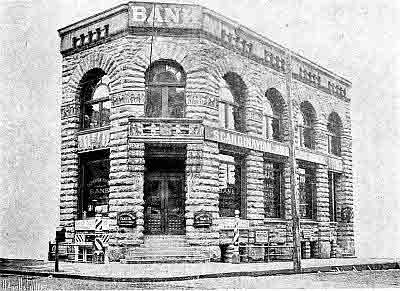
He was born in Laholm, Sweden, March 29, 1845. When a lad of one year he crossed the Atlantic with his parents, settling near Ottumwa, Iowa, where he received his early [Pg 54] education in the common schools. In 1860 he left Ottumwa with his father and older brother, Nelson, for Pike's Peak, Colorado, remaining two years, then returned to Iowa. In 1863 he crossed the Rocky with a wagon train, arriving in Sacramento after a journey of five months, September 24th. His health was harassed by exposure and hardship in crossing the plains, and as an alternative of recovery worked on a farm two years. Mr. Chilberg was anxious to complete his education, and in 1866 returned to Iowa via Nicaragua and New York. After taking a course in college he obtained a teacher's certificate and engaged in teaching, but abandoned the profession after three years of successful experience to enter a more lucrative position in Ottumwa. In 1857 he journeyed to Seattle, where he still resides, embarking in grocery business in company with his brother, the firm being Chilberg Brothers. Three years subsequent to his arrival in the city, he was elected to the city council, in 1879 appointed vice-consul for Sweden and Norway, in 1882 chosen county assessor, and in 1885 intrusted with the responsibility of city treasurer. In 1886 he was named city passenger and ticket agent for the Northern Pacific Railroad, but resigned, 1892, to accept the presidency of the Scandinavian American Bank of Seattle. In 1896 he was elected to the board of education, and the following year assumed the presidential chair. He was married to an estimable lady, Miss Mary Nelson, in Iowa, November 5, 1874. They have one son, Eugene, who is a young man of fine training, being educated in the Seattle [Pg 55] High School, Washington Agricultural College and School of Science, and Washington State University.
Peter Wickstrom.—With the first brigade of Scandinavians, Peter Wickstrom marched in the front rank. He was born in Sweden, 1837, arrived in St. Paul, Minnesota, 1868, and four years later beheld the city of Portland, Oregon, and the same year located in Seattle.
Louis and Henry Peterson.—The Peterson brothers were among the early Scandinavians and the first to engage in the art of photography in the city of Seattle. They were born in Norway but sailed for America while young boys, arriving in Chicago, 1857, where they resided nineteen years, leaving for Seattle, 1876.
Martin C. Mortensen.—Mortensen was a native of Denmark, and arrived in Seattle the same year as the Peterson brothers. He came to America, 1868, and two years later landed in San Francisco, spending six years in that city, then journeyed northward.
Christian C. Plough.—Vice-Consul Christian C. Plough is one of Seattle's most highly respected citizens. He was born in Denmark, 1825, and came to America, 1868, selecting Chicago for his first stopping place, but after two months of abode in the Windy City he removed to Nebraska, where he stayed one year. The Pacific was his aim and thither he went, disembarked in Olympia, via San Francisco by boat, 1872, where he remained three weeks. Portland, Oregon, had attracted considerable attention as a city of business prospect, [Pg 56] and Plough again picked together his effects to resume another journey. He stayed in Portland three years then removed to Seattle. In 1883 he was appointed vice-consul for Denmark, served with honor until 1895 when he was compelled to resign on account of ill health. Christian Geerstsen, a man of honor and intelligence, came to America in company with Plough, and also arrived in Seattle together. He was born in Denmark, 1839.
Ben Jensen, now a resident of San Juan county, arrived in Seattle when a dense forest clothed the principal streets. He was born in Norway, came to America while a youth, and has proved a worthy factor to his adopted country. Ole Egge, also a native of Norway, has shared the hardships of the early Pacific. He is a man of intelligence, and enjoys the respect of his countrymen. His son Peter is a bright man of mechanical ingenuity, and landed in Seattle with his parents.
In the more recent years, Scandinavians in Seattle have made great progress in professional and business circles. In politics, too, they have commanded notice, and in science and letters attention. E. H. Evenson is the incumbent county auditor, and H. P. Rude councilman-at-large.
E. H. Evenson was born at Whitewater, Wisconsin, in the year 1852. His early life was spent on a farm in Waupaca county, Wisconsin. At the age of 18 he began to teach in the common schools in his neighborhood, and with the money thus earned he started on a six years' course at Decorah College, Iowa, from which he graduated in the spring of [Pg 57] '79. During all this time he taught common schools at intervals, and during vacations worked in the harvest fields of Minnesota and earned the money with which to pay his college expenses. Having finished his course at Decorah College he entered the State University of Wisconsin, from which he graduated with the class of '81.
In the fall of the same year, Mr. Evenson secured a position as teacher in Milton College, Milton, Wisconsin, where he remained for three years; at the end of that period he removed to Madison, South Dakota, to fill a place as teacher in the State Normal School at that city, which position he occupied for two years; he was then elected county superintendent of schools for Lake county, in which capacity he served two terms. At the close of the last term he made another move west, to Puget Sound, and settled on 40 acres of land near the town of Kent, where he now resides with his family. He is at present serving his second term as auditor of King county.
Mr. Evenson is a firm believer in the "single tax" theories of Henry George; that is, in placing all taxes on ground rents. The justice of that method, he claims, is based on the following self-evident truths:
"1st: That whatever the individual produces, belongs to the individual, and whatever the community produces, belongs to the community.
"2d: That the general rise in land value, commonly called ground rents, is caused by the growth of the community [Pg 58] and its competition for work, and therefore, by right, belongs to the community.
"3d: That, as taxes are needed for the welfare of the community, it is only in accordance with natural and divine law that the community makes use of this common fund before it resorts to the confiscation of what properly belongs to the individual.
"4th: That it is not only unjust in principle, but injurious to the last degree in practice, that one man is taxed more for making land useful and employing labor on it, than another is taxed for holding land idle and keeping labor off it.
"5th: That to tax labor or its products, is to discourage industry.
"6th: That to tax land values to their full amount will compel every individual controlling natural opportunities to either utilize them by the employment of labor, or abandon them to others; that it will thus provide opportunities of work for all men, and secure to each the full reward of his labor."
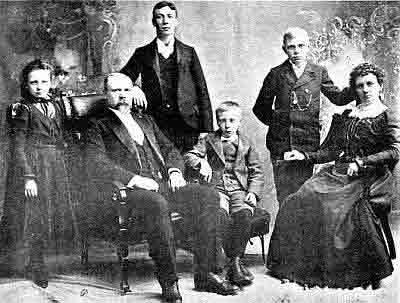
[Pg 60] H. P. Rude, the fearless councilman-at-large, of Seattle, was born in Toten, Norway, March 4, 1861. He graduated from the public school at the age of fifteen, later took a course in higher education at a private institution. From boyhood he manifested native pluck which his career plainly reveals. Unlike most boys, he spent his leisure studying and learning the tailoring trade. Seeing that the seat of his birth being too narrow for cosmopolitan development, he planned for the national capital against the will of his father. In a confidential manner he obtained two crowns from his grandfather, and under veil of night walked forty-two miles, arriving at Dahl Station, Eidsvold, at ope of dawn, from whence he took the train to Christiania. Though only a youth of fifteen, he found employment in a leading tailoring establishment, and attended school during evenings. In 1881 he emigrated to America, after making a short stop in Chicago, he proceeded to Redwing, Minnesota, to visit relatives who lived fifteen miles out in the country, in the state of Wisconsin. Unable to articulate an English sentence, "but where there is a will there is a way," crossed the river with an Indian, found the road by means of a guide-post, and stalked the unknown distance. After a pleasant reunion with friends and relatives, he returned to Redwing, worked for some time at his trade, then embarked in business for himself. His next move was to Minneapolis, where he found employment in a fashionable store. He joined the Tailors' Union, having a membership of 200, and within a year became its president, and subsequently was chosen a delegate to the Trade and Labor Assembly. He resigned from the Union to engage in business of his own which he followed for some time. After disposing of his interests in Minneapolis, he traveled in the surrounding cities, then crossed the Rocky, arriving in Seattle, 1890, during the transient boom of Anacortes, which attracted him to that place, but returned to Seattle ere long. He worked for awhile as cutter, then started a tailoring establishment of his own.
For years he had been alert to public affairs, and in 1896 [Pg 61] was elected councilman from the Sixth Ward, the fusion stronghold, with a large majority. He was renominated by the Republican party, but councilman-at-large, and elected with an increased vote. On resignation of Mayor Wood, he was instrumental in placing Judge Thomas J. Humes into the mayor's chair. To the credit of Mr. Rude it must be said that he has ascended to his political honors unsought, and that his record is emblematic of honesty and ability. He has been opposing the perpetuity of the gambling hells in the lower strata of the city in such a manner that even his political enemies had to commend his course. His famous resolution made the tenderloin district shiver with fear, while honest men and women bowed with gratitude. The following is taken from a leading daily of Seattle:
"H. P. Rude, councilman-at-large, is entitled to great credit for his endeavor to put a quietus to certain classes of crime so often indulged in the various places of resort in the lower part of the city."
Mr. Rude's influence among the members of the city council is made conspicuous by his representation on the several committees. He is chairman of the police license and revenue committee, and a valuable member on the committees of finance, corporation, labor, public buildings and grounds, and harbor and wharf.
He was married, 1881, in Minnesota, to Miss Lina Sophia Larsen, a lady of lofty character, to whom he was betrothed in Norway. She was born in Eidswold, November 24, 1863, [Pg 62] of highly respected parents, and emigrated to America a few months subsequent to the arrival of her husband. They have four children, Henry M. Rude, born in Wisconsin, March 14, 1883. The other three are natives of Minnesota, George A. Rude, born May 3, 1885, Lillie Palma Rude, February 24, 1887, and Morris O. Rude, April 10, 1889.
J. H. Ekstrand, a true son of Sweden, and an ex-minister of the M. E. Church, is a Seattle pioneer. He came to the United States more than two scores of years ago, and has been influential in both church and political circles.
E. A. Seaburg, a native of Sweden, has likewise given keen vigilance to public affairs, always a stalwart republican. As regards men of scholarly attainment, Rev. M. A. Christensen ranks among the most polished on Puget Sound. He is an accomplished linguist and an eloquent pastor of the Emmanuel Lutheran Church. H. M. Korstad, a graduate of the University of Washington, is also master of several languages and a deep student of ethics and psychology. He was born in the United States, but his parents hail from Valders, Norway. His sister, Bertha Korstad, is a prominent teacher in the public schools of Kitsap county.
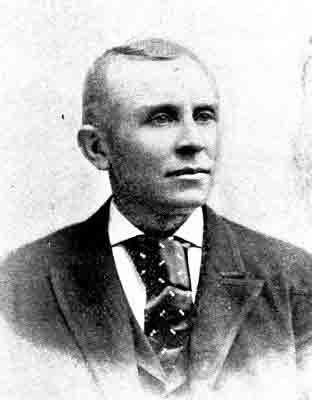
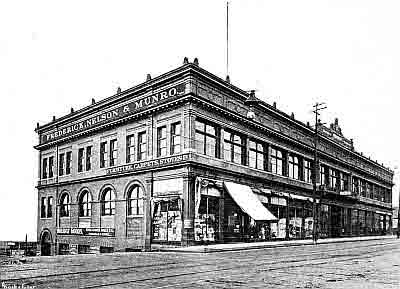
N. B. Nelson.—Very few have been more successful in business than the personage in question—N. B. Nelson—of the firm, Frederick, Nelson and Munro. He is a man of a lucky mixture—business, integrity, and sociability. Mr. Nelson was born in Kristianstad, Sweden, July 31, 1857, and like most boys in that country received a thorough schooling. From boyhood he had nursed a liking to see America, and in 1875 landed in Colorado, minus means, a stranger in a new world, and worst of all unable to converse with the general public, but picked up the language with marked rapidity. He bent his energy to farming, following the pursuit for several years in Garfield county, but at the same time gave keen eye to public affairs, and served the people as county commissioner for three years. His attention was engrossed with the progress of the Pacific, and thither he journeyed, 1891, and shortly after embarked in furniture business on [Pg 65] Pike street in a store less than twenty by sixty. At present the firm of Frederick, Nelson and Munro occupies the Rialto Block, in the very heart of the city, covering 105,400 square feet, more than two and a half acres of household goods. The traffic of the firm is immense, exceeding every establishment of its nature north of San Francisco. Mr. Nelson was married, 1895, to an accomplished young lady, Miss Teckla Johnson, born in Ronneby, Blekinge, Sweden. They have two boys, Frederick Creigh Nelson and Chester Munro Nelson.
Axel H. Soelberg, bank cashier and a respected citizen of Seattle, was born at Ness Hedemarken, Norway, on March 2, 1869. He received a common school education, graduating at the age of fourteen. In 1884 he secured a position in the store of Jevanord Brothers in Brumundalen, with whom he remained until in the spring of 1888, when he emigrated for America. He arrived in Minneapolis on the morning of May 17th. A short time previous, a number of Norwegian-American citizens of Minneapolis had organized the State Sash and Door Manufacturing Company, and Mr. Soelberg was offered the position as book-keeper a few days after his arrival in the city. He served in this capacity for about two years, then was elected secretary of the firm, and two years later vice-president. In the spring of 1892, when the Scandinavian American Bank of Seattle was organized, he was tendered the position as book-keeper in the bank, and accepting, Mr. Soelberg found himself in Seattle on one of the first days in April of that year. At the annual meeting in 1894, he was elected cashier of the bank, which position he now holds. Mr. Soelberg is a man of literary aptitude as well as of business capacity, has contributed largely to the Seattle Daily Times and other leading papers. He could have won laurels on the field of letters as well as business notice in the world of traffic. In January, 1898, he was married to Miss Olga Wickstrom, an accomplished young lady of Seattle. They have a beautiful home in one of the finest parts of the city.
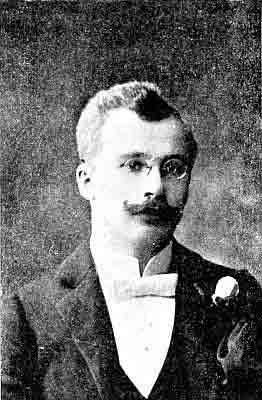
[Pg 67] Drs. Ivar and Eiliv Janson.—Every Scandinavian is familiar with the name, Kristofer Janson, the eminent Norwegian poet and novelist.
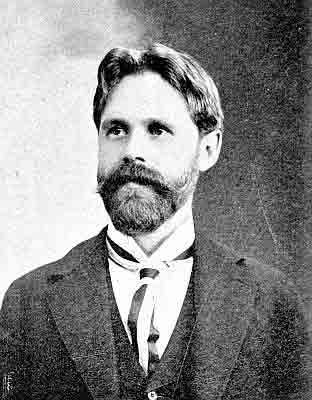
[Pg 69] The two doctors in question are sons of this noble author, Ivar being born in Bergen, Norway, March 1, 1865, and Eiliv in Sel, Gudbrandsdalen, May 25, 1870. Both received their early education by private tuition, and in 1882 emigrated with their parents to America, settling in Minneapolis. They took advantage of the splendid school facilities offered by that city as preparation for the state university of Minnesota, where they graduated, 1892, with the degree of Doctor of Medicine, M. D. Their collegiate records bespeak scholarly distinction which have been made more emphatic by subsequent years. Immediately after graduation, Dr. Ivar Janson was appointed assistant professor in the medical department at his alma mater, but resigned the chair to take a move westward, arriving in Seattle, 1895, where he enjoys an enviable practice, being recognized as a leading surgeon on the Pacific. His brother, Dr. Eiliv Janson, steered his fortune to Astoria, Oregon, in the fall following his graduation, and soon rose to be one of the most beloved physicians in the city. His ability invited the attention of the public, and his practice grew immensely, being the largest in that part of the state. The last year he has spent studying at the universities of Europe, in Berlin, Dresden, Munich, Copenhagen and Paris, and will join his brother in Seattle next June. The two doctors have evinced the genius of their father, but in a different direction, the sire a poet, the sons surgeons and physicians. The former has climbed the ladder of fame, the latter are climbing it. They are both married to ladies of rare abilities and accomplishments. Mrs. Ivar Janson is one of Seattle's most gifted vocalists. "Think for yourself" is a soul-inspiring motto, and is applicable to the Janson family. In spite of angry opposition and glittering pelf the rich mind of Kristofer Janson has scattered sunbeams of truth and thought. He has sought to lift his countrymen upon the plane of reason and brotherly love. The sons have imbred their father's soul of thought and sympathy, which the public echo in more eloquent words than my pen.
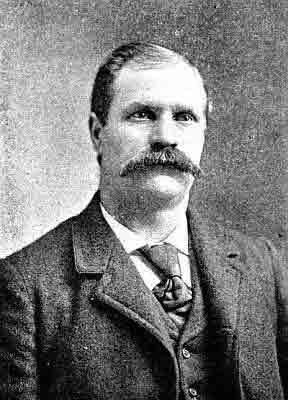
[Pg 71] C. N. Sandahl.—Washington is dependent on the science of horticulture, fruit is her future. Any man willing to bend his heart to the soil is a valuable exponent in the upbuilding of the country. Few men have done more in this line than the well-known floriculturist and nurseryman, C. N. Sandahl, of 1123, Second Avenue, Seattle. He was born in Horsens, Denmark, 1857; acquired his education in the public schools of his fatherland, and in the smiling book of nature, where real knowledge teems to an intelligent eye. In 1880 he emigrated to America, spent ten years in Ohio and Minnesota, pursuing his chosen vocation, then journeyed to Washington and located in Seattle. After a careful scrutiny of the country he engaged in floriculture and nursery, which occupation he is following with notable ability. Mr. Sandahl is a man of business capacity as well as of scientific propensity, and honest and honorable.
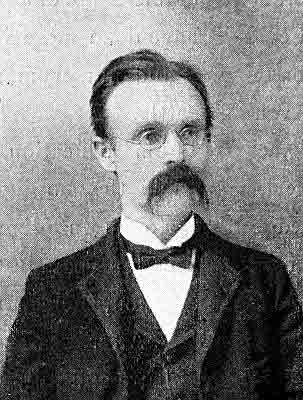
[Pg 73] Samuel S. Langland.—Quiet of disposition but deep in thought, modest in demeanor but aggressive in argument. The above words unfold Mr. Langland's characteristic, an able lawyer of Seattle. He was born near Stavanger, Norway, August 13, 1856, and emigrated with his parents to Minnesota in the spring of 1867. His early boyhood experienced the various hardships and vicissitudes incident to pioneer life. At the age of fifteen he launched out for himself, choosing as a means of support the apprenticeship of a tailor in Mancato, in which capacity he labored a year and a half. From whence he went to St. Paul, a stranger in an unwont sphere. English defied his tongue, but soon melted to his grasping intellect. He worked at his trade about two years, but to ascend to a higher stage of culture, he converted his energy to loftier aims, worked for his board and attended private school, paying for his tuition by doing janitor work, sweeping and keeping the schoolhouse in order. After two years of assiduous study in this institution, he entered the classical course of four years in the St. Paul High School which he completed in three. In the fall of 1881 he was matriculated in the same course at the state university, graduating with honor in June, 1885. At the commencement exercises he distinguished himself by delivering the most thoughtful and eloquent oration of the class, his subject being "Is Man Advancing?" for which he received compliments from the faculty and leading men of the state present on that occasion. His struggles at the university with poverty symbolize an indomitable will. He toiled evenings and Saturdays sawing wood and doing other manual labor, his vacations were spent canvassing, or in the harvest field. After darkness comes sunshine, and the year following his graduation he was appointed professor of English Literature in the Augsburg Seminary. In 1887 he studied law in St. Paul, was admitted to bar, and practiced for some time at Moorhead, Minnesota, where he made rapid progress, being nominated prosecuting attorney on the democratic ticket, but as that party was in the minority he went to defeat with the rest of the candidates. At Moorhead he was married to an estimable lady, Miss Esther Annette Hutchison, and in December of 1890 moved to Puget Sound as an alternative to regain health and vigor. Since 1891 he has been practicing law in Seattle with growing promise, his specialty being real estate litigation.
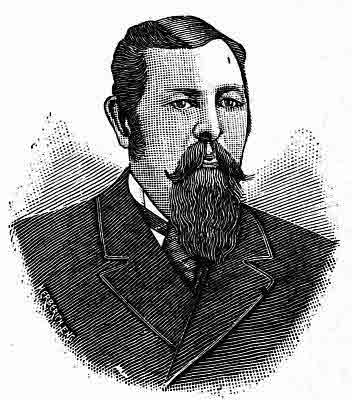
[Pg 75] A. Lundberg.—The person of this sketch, the educated artificial limb manufacturer, A. Lundberg, was born in Kalstad, Sweden, 1847, where he received a good schooling and learned his benefactory profession. At the age of twenty-one he set sail for America, locating in Minneapolis, where he stayed until 1888, working at his trade. From whence he moved to Spokane, Washington, residing in that city eight years. Seattle had attracted notice as an appropriate seat for a man of science and mechanical ingenuity, and thither he migrated in 1896, establishing his headquarters in Sullivan Building, First Avenue. Mr. Lundberg is the only artificial limb manufacturer in the state of Washington; he was educated for this work in early youth and has followed it uninterruptedly. In many instances he has wrought out wondrous results, cured cases that defied medical science. He was married in Minneapolis, January 24, 1877, to a pleasant lady, Miss Anna Dahlgren. They have three children, Evalin, Denalda and Marie.
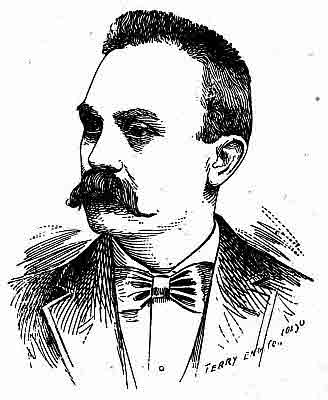
[Pg 77] C. G. W. Anderson.—Men are destined for divers avenues, but a thoughtful man will follow the course of his inclination in the climax upward, and success will smile as he proceeds. Mr. C. G. W. Anderson seems to have incorporated this maxim. He was born in Sweden, September 24, 1856, where he enjoyed the benefit of a good schooling and a healthy course in the curriculum of experience. At the age of twenty-six he left his native soil for the New World, arriving in the United States, April 24, 1880. After ten years of various employment in the eastern states he came to Seattle, engaging in hotel business on the corner of Terrace and Fifth Avenue, where the Anderson looms in emphasis of the proprietor's energy. Mr. Anderson is a man of a genial disposition, social and affable and in all respects an honored citizen.
Oscar Anderson.—A man of honor and integrity is a worthy adjunct to any community. Oscar Anderson belongs to this type which his career bespeaks. He was born in Karlskrona, Sweden, January 13, 1859, where he received a thorough education in the public schools. From boyhood he showed talents attributive only to the soul of the genius. In 1872 he entered the hardware business, but abandoned it after two years of experience to pursue the vocation of his forte—jewelry and mechanism. In 1879 he engaged in business for himself which he continued successfully until 1893. During all these years he was employed by the Swedish navy mending and adjusting the chronometers of the men-of-war. In 1891 the Russian government engaged his ingenuity, and on one occasion he worked three days and three nights repairing the chronometers of the navy for which he received a remuneration of 297 crowns. In 1892 he spent considerable time traveling in Denmark, partly for pleasure and partly for studying the conditions of the country, Copenhagen being the center of interest where he enjoyed himself for a few months. The following year he sold out his business in Sweden and emigrated for America, locating in Seattle, a stranger in a strange country, but ere long his native "pluck" was manifested, and a fine establishment at 406 Pike street emphasizes his ingenuity and business ability.
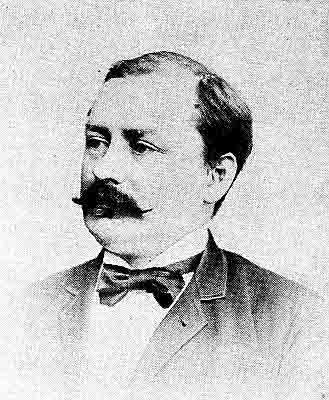
[Pg 79] P. A. Hallberg.—Experience is the best teacher, a college course of mere theories gives little knowledge of the world. A course in fighting the billows of the deep, or wrestling with the stumps of the forest, is of more practical worth than a head crammed with deceased tongues, or theoretical airships. P. A. Hallberg corroborates my view with his personal experience. He was born in Skone, Sweden, 1867, and in his early teens sought the waves. He visited China and other oriental climes, faced the angry surges of Cape Horn, and dashed ashore at San Pedro, California, from whence he sailed northward, navigated for some time as mate on Puget Sound, also served in the government marine. After years of sea-faring life he turned his attention to terra firma, located in Seattle and commenced new pursuits. He worked for three years in the Union Bakery, then spent some time in a meat market, and in 1894 bought the Union Bakery, and four years later removed to Second Avenue, between Pike and Union, where he is doing a large business. Mr. Hallberg is a man who has won the respect of the people of Seattle by his integrity of character and straight business method.
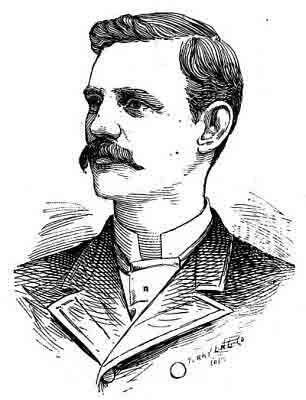
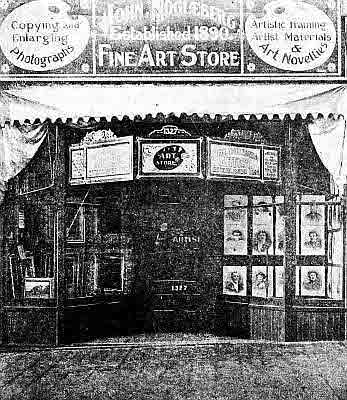
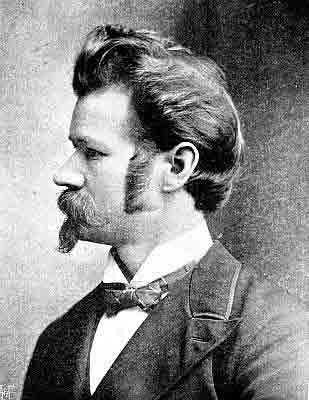
[Pg 83] John Nogleberg, a gifted artist, portrait, figure and landscape painter, of Seattle, was born in Kongsberg, Norway, February 21, 1861. He received a splendid education in his native country in music, science and art, and in 1881 emigrated to America, locating in Chicago, where he studied at the Academy of Fine Art and at the Art Institute. After nine years of close application to his chosen profession, he moved to Seattle, where he has the largest establishment of its kind west of Chicago, engaging constantly a number of employees in the different departments.
At the beginning of 1899 he moved into his elegant building on Second Avenue, near Union Street, but from the present indication of business his beautiful apartments will soon prove too small. He is an athlete and an intense lover of nature. The soul of grandeur and sublimity seems to be a part of his being, which his masterpieces plainly reflect. He is fond of outdoor sport, fishing and hunting give him pleasant hours of recreation. He is an active member of the Y. M. C. A., and a promoter of the Norwegian-Danish M. E. church. In a word, Mr. Nogleberg is a true gentleman as well as an artistic genius, being strictly temperance and of noble aims and integrity.
Hans Hansen, manager of the Union Fish Company, and a man of indomitable will power, was born in Norway, July 20, 1859, where he laid his foundation for an active career. In 1881 he arrived in Minneapolis and six years later beheld the city of Seattle. He settled on a homestead in the Quillayute valley, but returned to the Queen City after a few years of experience at farming. In 1896 he was elected to the legislature, and became noted for his opposition to fish traps, and his earnest support of Hon. George Turner for United States senator. He has been a frequent contributor to the different papers on political and reform topics. In religion he is a Methodist.
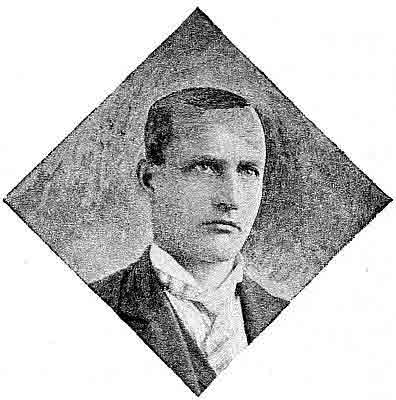
Societies—Press—Prominent Citizens—Churches.
Scandinavians in Seattle have contributed largely to the social feature of life. They have organized a number of societies, some flourished immensely for some time, then died a natural death, others have continued to prosper through sun and storm. The Normanna Literary and Social Club was among the first Norwegian societies, but alas! only a few [Pg 86] days of sunshine then clouds and dispersion. The Baltic Lodge, I. O. G. T., was placed on record February 10, 1888, and has since its birth drank vigor from the fountain of wholesome reform. In a word, it is the healthiest Scandinavian society in the city of Seattle, and some of the members merit gratitude for their indefatigable work. G. Nygard, Gust. Thompson, Ole Finnoy, Martin Erickson, Ole Larsen, James Eggan, Anton Peters, B. H. Miller, Peter Peterson, W. T. Hillestad, A. Zaar, and Belle and Lena Egge, Christina Newgard, Augusta and Lottie Stromberg, Mrs. Emma Eggan, Ida Peters and Matilda Iverson have sacrificed both time and energy for the advancement of the temperance cause.
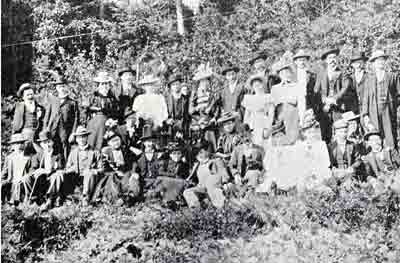
A Swedish society, baptized Svea, the 31st of May, 1889, had but a few struggles with the chilly world. The following year it withered into oblivion unsung. Nordmændenes Sangforening (Norwegian Singing Society) was organized in November, the same year, but soon gave signs of ephemeral existence. The Sagatun was born the year after, lingered on a narrow path for awhile, finally fell into an innocent grave.
The Swedish Club, organized in 1892, is a healthy and vigorous society. From its embryo to the present time it has had a smooth run of sunshine and prosperity. It takes unity of hearts and energy to steer a social fleet through all sorts of weather from the tiny stream of embarkation into the calm sea of triumph. The Swedish Club has accomplished this. The object of the organization is exclusively fraternal, to unite the Swedish elements in the city by friendly ties, and [Pg 87] to extend a warm hand to those coming within its reach from other cities or climes. The first officers were: H. E. Humer, Prest., Rudolph Alm, V. Prest., David Petree, R. Sec., G. Edinholm, F. Sec., Andrew Chilberg, Treasurer, A. T. Lundberg, Librarian, Hugo Hettengren, M. C. At its rift of morn only thirty-two names smiled on the recording scroll, while now two hundred members in good standing bespeak its strength, with the following incumbent officers: J. M. Johnson, Prest., N. J. Nyquist, V. Prest., A. Zaar, R. Sec., H. J. Norden, F. Sec., N. B. Nelson, Treasurer, A. T. Lundberg, Librarian, J. Nyman, M. C., and P. J. Melin, Otto Roseleaf and D. Nordstrom, Trustees.
The Danish Brotherhood, a national league of high standard, aiming to benefit and to educate, found admission to Washington about eleven years ago. The Seattle Lodge 29, was organized April 8, 1888, with eleven chartered members, which now numbers one hundred and fifty. The Danish Sisterhood, an auxiliary to the Danish Brotherhood, has taken steps in the right direction, working to sweeten and strengthen the ties of love and mutual amicability.
The Norwegian Workingmen's society sprang into existence about eight years ago, and lived through many scenes of joy and pathos, now flourishing, now trembling to its foundation. Alas! detonating meteors exploded within its labyrinth and gloomy melancholy spread her black veil, an oratorical flower dropped here, and a declamatory bloom there, at last the tree of support shivered in chilly desolation, and withered into nothingness.
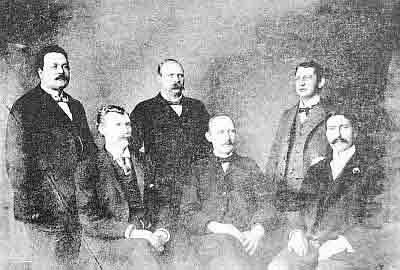
[Pg 89] The Norse Club, organized three years ago, has reveled in healthy sunshine, and smiling tendrils have encircled its prop. The 17th of May, 1899, bespeaks its culmination. The celebration of Norwegian independence under its banner was a marked event among the Scandinavians.
Thousands of people gathered at Madison Park, Seattle, from all parts of the Sound, to participate in perpetuating the memory of the Norse heroes. Honor is due to the following gentlemen for launching and piloting this social ship into a haven of safety: H. P. Rude, C. M. Thuland, Frank Oleson, Christian Bolgen, A. J. Thuland, A. H. Soelberg, B. A. Clausen, N. A. Christof, A. Scottness, Theodore Pederson and Julius Sunde.
Fremad, the social wing of the Norwegian Lutheran church, has lived through many upheavals, and yet looks forward with unclouded eyes. The other Scandinavian churches have their inviting adjuncts, but of more recent date, which tender valuable aids to their respective mothers.
Scandinavians in Seattle have been fortunate in having men and women gifted and willing to make the social feature of life entertaining and successful. Of all the gaudy society flowers, no one merits more applause than the genial photographer, James Eggan. He was born in Osterdalen, Norway, 1872, came to America in 1880, locating in the city of Minneapolis. From boyhood he evinced unusual talent as a comedian and as an artist. He could have gathered jewels on the stage as well as in the photographic studio. In 1889, he set out for the Pacific, and after taking a survey of the picturesque Puget Sound, selected Seattle as his future abode. Though only a youth of seventeen, yet he soon invited the attention of the public in both the social and the artistic world. Not only is Mr. Eggan possessed of natural endowments as a photographer and as a reciter, but is a true type of integrity and honesty.
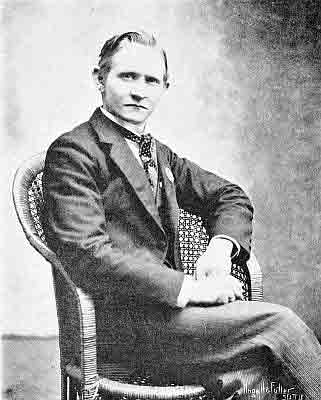
[Pg 91] Very few cities of three decades in the United States can boast of more short-lived Scandinavian newspapers than Seattle. The Scandinavian Publishing Company was the first on record, and issued two Scandinavian weeklies, viz., Vestra Posten and Washington Posten, which yet live and thrive. This company dissolved, and from its dissolution sprang two others; The Swedish Publishing Company, issuing Vestra Posten and a Norwegian concern of similar nature, publishing Washington Posten.
Vestra Posten was founded by N. P. Lind and T. Sandegren, and Washington Posten by Frank Oleson, assisted by Julius Sunde. The former is at present in the hands of N. G. Lind, J. W. Martin and A. Olson, who have raised the paper to a high standard. The latter is owned and edited by A. J. Thuland. C. M. Thuland, now lawyer, also gave heed to journalism. He turned out Seattle Tidende and The North, but both fell into an early tomb.
Julius and Engward Sunde organized and published Fram, which blossomed and bore fruit, but one sad day it was stretched on a lazy bier and wheeled to the grave. Folketidende popped into existence about four years ago but through some intrigue it died and was buried minus tears and ceremony. Folkets Blad was the next of the ephemeral journals; it was born in 1899, lingered through a few sunny months, then swallowed, without pity, by Tacoma Tidende.
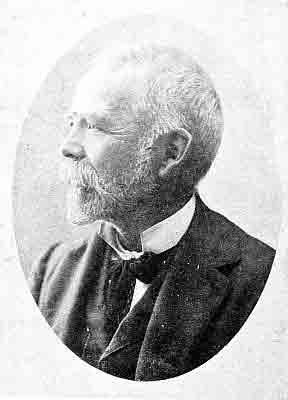
[Pg 93] Anent men of literary ability among the Scandinavians, George Bech, without doubt, stands in the first rank. He is a well-known author, musician and business man of Seattle, born in Roeskilde, Denmark, April 4, 1846. After finishing his education in the State School, 1865, he was awarded the degree of A. M., and the following year took examen philosophicus, Ph. M., at the University of Copenhagen; studied mathematics for some time, then went into business, trading in Norway, Sweden and Germany, but always assiduously at work during leisure writing poems and novels for the different journals of Denmark and Norway. In the latter country he made acquaintance with Olaf Lofhus, editor of "Bergens Tidende," to whose paper he frequently contributed, and Johan Sverdrup, then president of the National Storthing, in whose house he was a welcome guest. In 1887 he left Copenhagen, arriving in Seattle, August 22, where he found a rich field for his literary talent, for some time contributing to local and other papers, then editor of Folkedidende, and later Folkets Blad. He has written an exquisite dramatic work, "Hæng Ham," and a song, "Old Glorious Glory," which he has also put to music. It is Mr. Bech's ambition to have his song adopted as a national hymn. He was married in May, 1880, and has one son, sixteen years old.
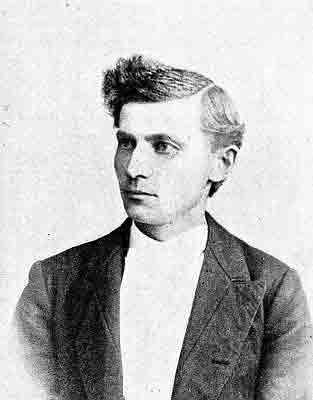


Graebert Anderson, an eloquent ex-minister of the M. E. church, and a gifted writer, was born in Denmark, 1860. After graduating from the public schools, he spent some time in private study, with a view of entering some academy, but instead of carrying out his plan, he left for America, when about eighteen years old. Shortly after his arrival in the New World, he commenced to prepare for the ministry of the M. E. church at the university in Evanston, Illinois. Here he spent five years, then migrated to the Pacific, where he has been recognized as the most eloquent pulpit orator among the Scandinavians on the coast, and has served as expounder of the gospel in the largest Norwegian-Danish churches, namely in Oakland and Eureka, California, and Tacoma and Seattle, Washington. Two years ago he resigned from the ministry to devote his time to journalism. In 1889 he was married to Miss Lottie H. Christensen, a lady of fine education, a teacher in the public schools of Racine, Wisconsin. They reside in Seattle, where Mr. Anderson is interested in newspaper business, being secretary of the Tacoma Tidende Publishing Company, with office in Coleman building, First Avenue, Seattle.
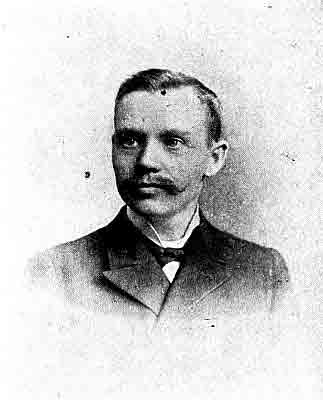
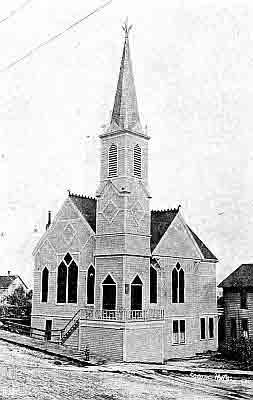
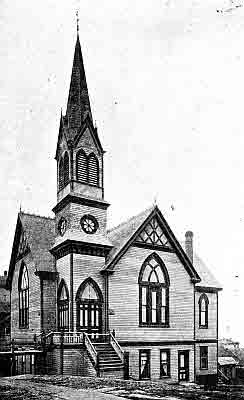
[Pg 100] Scandinavians have been liberal in their contributions to religious worship. Eight Scandinavian churches in the city of Seattle join to confirm this fact. The various denominations are represented: Lutheran, Methodist, Baptist, and Mission Friends. There are one Swedish and two Norwegian-Danish Lutheran churches, one Swedish and one Norwegian-Danish Baptist churches, one Swedish and one Norwegian-Danish Methodist churches, and one Swedish Mission church.
Ballard merits the appellation, City of Smokestacks. No small town west of the Rocky has more factories. Saw mills and shingle mills are sending clouds of smoke into the air day and night, and brigades of industrious men are busily engaged. The city has been regarded by many as a suburb of Seattle, but this is a misinterpretation. True, Ballard is near Seattle, and is connected to it by a well-equipped street railway, but has its own government.
The first Scandinavian who touched Salmon Bay, half a mile below Ballard, was probably Peter Friberg. In 1875 Gustaf Anderson pitched his tent on a green spot near the rippling water where he yet resides. He was born in Sweden, crossed the Atlantic in 1864, and spent several years in Chicago before coming to the Pacific. He is a man of intelligence and holds a respectable rank among the people. Ole Schildstad, a native of Norway, and highly respected, arrived simultaneously.
In those early days Ballard was undreamt. The smoke which now curls above its bustle did not enter the calm of the pioneers' hearts. They were contented with the peregrination of daily necessity. Few Scandinavians then stalked the dense forest which clad the turf where five thousand people now dwell midst noise and progress, but today over one thousand Vikings mingle in the various walks of life in the town.
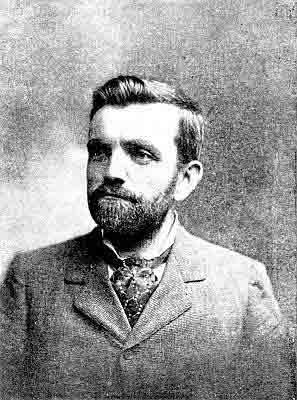
[Pg 103] John Johnson, the leading merchant and an intelligent and honored citizen, is a native of Norway, being born March 26, 1862, midway between Trondhjem and Levanger, where he received his early education. At the age of ten he emigrated to America, locating at Muskegon, Michigan, attended the public schools three years, worked in a saw mill four years, and clerked in a grocery store seven years. In 1886 he launched into business for himself which he is pursuing with marked success. During the same year he was married at Muskegon to a cultured young lady, Miss Magna Nelson, whose parents hail from Tromso, Norway. In 1893 Mr. Johnson moved to Ballard and immediately embarked in grocery business. His large establishment and business method plainly reflect his ability, and a multitudinous circle of friends bespeaks his generosity and integrity of character.
Frank Engquist, the well-known merchant tailor of Ballard, was born in Sweden, 1861, received a fine education in his native country, and in 1882 crossed the Atlantic for the United States, settling at Moline, Illinois, where he remained one and a half years. His next journey was to Minneapolis, where he found employment in one of the largest tailoring establishments in the city. In 1888 he migrated to Seattle, Washington, and shortly after resumed his chosen occupation. He was attracted by the fascinating aspect of the Sound, and abandoned his business to try his hand at agriculture in Rolling Bay. The gigantic trees and stubborn stumps plucked the laurels of his fancy, and in 1896 started business in Ballard, where he is permanently located. Mr. Engquist is an expert workman, honest and intelligent, and what is still loftier, a perfect gentleman.
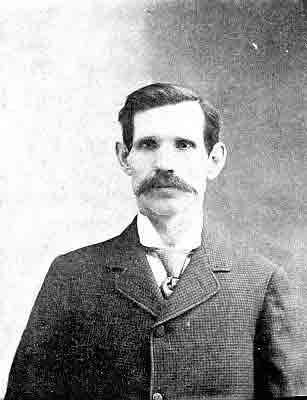
[Pg 105] P. E. Paulson, a genial business man, was born in Norway, 1865. His father was a prominent educator, having been engaged in school work about forty years. Mr. Paulson enjoyed the benefit of an excellent education, and in 1882 sailed for America, locating in Rock county, Minnesota. After two years of various occupation he arrived in Sioux Falls, South Dakota, where he stayed two years. The Pacific exercised a peculiar charm, and thither he emigrated, making Skagit valley his first stopping place, and afterward located in Ballard, where he now resides. Mr. Paulson is a leading member of the Foresters of America and other organizations. He is a man of a kind disposition, and universally respected.
I. C. Olson is a true type of honesty and individual character. He was born in Norway, and for years resided in Minneapolis. He came to the coast in 1893, settling in Ballard. In 1898 he was elected to the legislature, where he distinguished himself as a man of integrity and sound judgment.
Thomas Anderson is a rising grocer, and a prominent member of the Norwegian Baptist church, Revs. O. L. Hoien and G. Berg are well liked and earnest ecclesiastics. Rev. Martin Berg is editor of Kongeriget and an eloquent advocate of Christian principles.
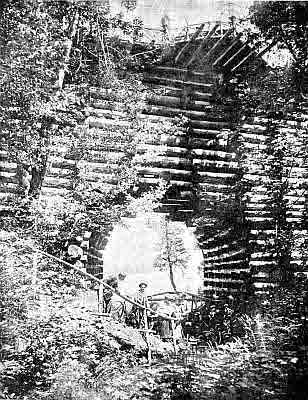
Tacoma, or the City of Destiny, is the second city in population in the State of Washington, and the first in natural grandeur. It is situated on fine terraces, commanding a beautiful view of Commencement Bay and the Sound for miles distance. Mt. Rainier, or Tacoma, towers over the city, and his head of snow and checkered bosom fills the soul with awe and wonder.
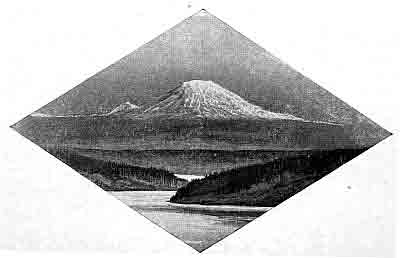
Scandinavians have made Tacoma their stronghold, about 10,000 dwell within the city boundary. Some rank among the most thrifty and highly esteemed citizens. They also bear the honor of being among the early pioneers who gave [Pg 109] light and courage to subsequent settlers. Mrs. Fredric Meyer, a native of Norway, previously alluded to, was one of the first white women to alight in Pierce county. Anton Malm, born in Sweden, came to the coast in 1870, and mingled with the first pioneers of Tacoma.
The Scandinavian business and professional men of Tacoma merit kind consideration. They have risen to prominence and invited the confidence and respect of all regardless of nationality. A biographical history of the most prominent confronts itself. They are exemplary men, and their rise to affluence and influence in an honest, straightforward manner is worthy of emulation.
Professor Olof Bull.—There are but few whose souls are imbued with divine strains. Music like poetry is born with a man. When Ole Bull was asked, "Who taught you to play so sweetly?" he answered, "Norge's hoie Fjeld og dybe Dale" (Norway's high mountains and deep dales). The name of Olof Bull is synonymous to that of Ole Bull. The former came from Sweden, the latter from Norway. Prof. Olof Bull was born in Undersvik, Helsingland, Sweden, March 31, 1852. His parents were Olof and Katarina Bull, his father is dead but his mother still lives. From early childhood he evinced extraordinary talent for music which was cultivated to a marked degree under A. Sorenson and other masters. In 1869 he sailed for America, arriving in St. Paul, where he rapidly gained fame as a genius violinist. In 1876 he organized the "Olof Bull Concert Company" which scattered divine music the land over, and rose to enviable reputation. In 1881 he was appointed musical director of the Boston Opera, which he resigned in a year to accept the professorship of violin in the Chicago Musical College, where he remained until 1890, when he journeyed to Tacoma to be installed as musical director of Tacoma Theatre, which chair he is filling with distinction. Professor Olof Bull is a genius as a violinist, and greater still a man of character, kind and compassionate.
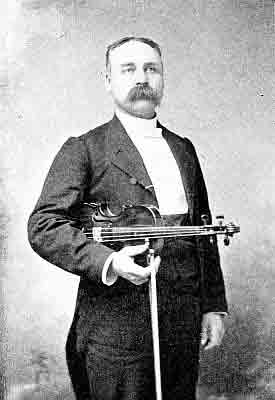
[Pg 111] O. B. Selvig.—The esteemed cashier of the Metropolitan Bank of Tacoma, O. B. Selvig, was born near Drammen, Norway, in 1851. He received a fine education, and at the age of seventeen bid farewell to his native seat for America, arriving in Kandiyohi county, Minnesota, with his parents. Young Selvig, like others who come to a new country with scanty means, had to do his own rustling. He worked in different places at hard manual labor up to 1878, when he secured a position in the postoffice at Willmar, and two years later received the appointment of postmaster, and shortly after became head agent for the American Express Company. He served faithfully for seven years in this capacity, then resigned to accept a more lucrative employment in the Kandiyohi County Bank. In the fall of 1888 he migrated to Tacoma, Washington, and after cultivating acquaintance with influential men in the city, he was tendered a position in the Metropolitan Bank, and soon rose to cashier. Mr. Selvig is not only a man of business, but of honor as well; one beloved and respected by all.
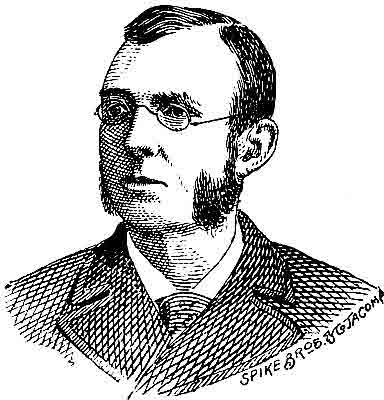
[Pg 113] H. E. Knatvold.—In the fall of 1892, the Scandinavian American Bank of Tacoma was organized, with a capital stock of $100,000, raised partly in Tacoma and partly in the east. H. E. Knatvold, well known in business circles, was elected cashier and general manager of the institution. He was born in Drammen, Norway, September 3, 1848, where he obtained his early education. At the age of fourteen he sailed with his parents for the United States, settling in Freelom county, Minnesota. He engaged in farm work, and spent his leisure studying, thus acquiring a fair knowledge of English. At the age of twenty-one he removed to Albert Lea, where he secured a clerkship in a store. To prepare himself to cope more efficiently with the surges of the world, he relinquished his position to take a course in Western College, Iowa, and shortly after embarked in hardware business in Albert Lea. In 1884 he crossed the Rocky for the Pacific, locating in Tacoma. He engaged in farming and real estate which he followed successfully until 1892, when he was ushered into the chair of cashier in the Scandinavian American Bank, which position he has filled with credit ever since. Mr. Knatvold is a man of honor and energy.
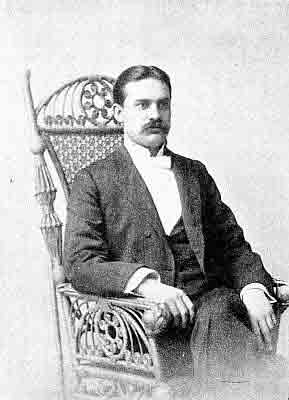
[Pg 115] Dr. C. Quevli.—It is a conceded fact that C. Quevli, of Tacoma, is one of the most highly learned doctors on the Pacific. He was born in Blakjer, Norway, June 24, 1864. When six years old he left his fatherland with his parents for America, locating in Jackson county, Minnesota, where he received the education that the common schools could afford, then took a course at St. Olof's College, Northfield, afterward entered the State University of Minnesota, where he graduated with the degree of M.D. He launched into a typo for successful practice at Lamberton, Minnesota, but his soul was thirsting for more knowledge, and to satisfy this he sailed for Christiania, Norway, where he took a post-graduate course. On returning to the United States he selected Tacoma for his future abode. Here he practiced three years, then returned to Europe to continue his studies at the University of Berlin, from whence he crossed the channel to England, and took a post-graduate course in Kings College and Hospital of London. Afterward he traveled in France and other European countries before voyaging to America. Dr. C. Quevli is a physician of enviable reputation, but that is not all; he is a gentleman beloved and honored.
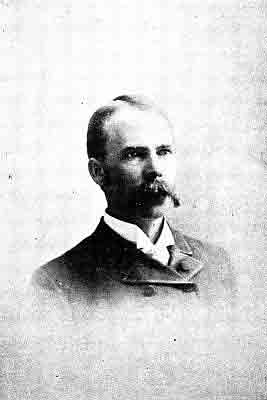
[Pg 117] Dr. J. L. Rynning.—The well-known doctor and professor of physiology in the Pacific Lutheran University, J. L. Rynning (formerly Dr. J. L. Jensen), of Tacoma, has gained friends and eminence in his chosen profession. He was born in Iowa, 1858, of Norwegian parents, who removed to the frontier of Minnesota while he was an infant of one year. Young Rynning did not enjoy the opportunities that most boys have. The schoolhouse was unknown to him until ten years of age. When time offered a rural schooling he took advantage of it as preparation for the public school of Rushford, later studied at the academy of Madison, Wisconsin, and Luther College, Decorah, Iowa. He had a whim for the West, and migrated to Montana where he engaged in school work. Mines, too, invited his notice, and during his vacation of 1889 held the superintendency of a silver mine in Montana. Mining, however, was abandoned for a more professional career, and in 1892 graduated from Rush Medical College in Chicago with the degree of Medicinæ Doctor, M. D. Immediately after graduation he located at Butte, Montana, where he practiced for some time. In 1893 he was married in Minnesota to Miss Marie Ellertson, a lady of fine training, and took a wedding trip to the Pacific. He foresaw the great future of the country, and removed to Stanwood, Washington, to follow his profession. When the Lutheran University was established at Parkland, he removed to Tacoma to tender his aid to the institution. In this city he is permanently located, encircled with a multitude of friends. Dr. Rynning is a man of heart as well as ability, honest, kind and sympathetic.
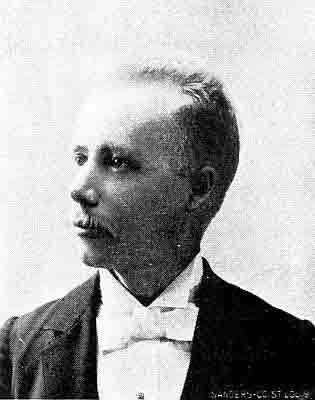
[Pg 119] Eric Edw. Rosling.—Tacoma has reason to feel proud of the personage of my pen, Eric Edw. Rosling, one of the ablest lawyers on the coast. He was born in Stockholm, Sweden, March 3, 1865, and came to Boston with his parents while a young boy. From infancy he displayed extraordinary talents, which subsequent years have made more realistic. After acquiring a liberal education he entered the Boston University Law School, where he graduated with honors, completing a three years course in two. In 1890 Mr. Rosling arrived in Tacoma and at once manifested the same tireless energy which characterized his success at college. As a lawyer he has but few equals, his logical and oratorical endowments make him especially fit for the eminent profession he is pursuing. He is a man of literary taste and studious habit which his large law and private libraries join to emphasize. In 1897 he was appointed by the Supreme Court of Washington as chairman of the committee to examine applicants for admission to the bar. In politics he is a republican, but has refused to accept any political office save the office of city prosecuting attorney during Huson's administration. Twice he has been elected to the board of education and has filled with distinction its presidential chair. His deep interest in educational and church work has made him a valuable factor throughout the Pacific. His oration at the Willamette Chautauqua Assembly, Oregon City, in July, 1898, and his address at the National Educational Association, Los Angeles, 1899, placed him before the nation as an eloquent speaker and a finished scholar. He was married at Tacoma, December 12, 1890, to Miss Minnie Belle Lincoln, an accomplished lady of Boston. They have three children and a beautiful home in the finest part of the city.
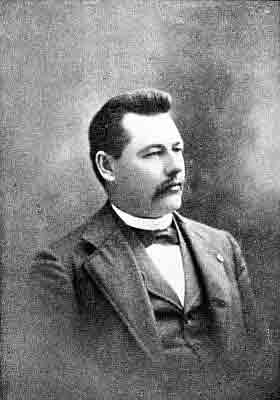
[Pg 121] J. M. Arntson.—Self-made men, as a rule, become the leaders in a free country where ability shines with unclouded luster. The individual in question, J. M. Arntson, a rising lawyer of Tacoma, is a representative of this class. He was born on a farm in Waukesha county, Wisconsin, 1858, where his parents, Johannes and Mekaline, settled in 1844, they being among the first Norwegian emigrants to that part of the state. When eight years of age his parents removed to the central part of Minnesota where they engaged in general merchandise business. Here young Arntson was reared and trained for a mercantile career, his education was obtained in the public schools and by private instruction. He was married at Willmar, Minnesota, 1882, to Miss Annie M. Olson, a lady of heart and character, and the next year joined the army of homeseekers, attracted to the shores of Puget Sound, and settled in Tacoma, Washington. Since coming to this city he has been engaged in various pursuits, first grocery then real estate. From youth he had possessed an inclination for law, and to yield to his forte, he closed out his business, and devoted his whole time to legal acquirements. In 1894 he was admitted to bar, and immediately embarked in practice which has constantly grown more promising. In 1898 he received the appointment as clerk of police court, and in connection with the duties of his office continues a lucrative practice. Though Mr. Arntson was born and raised in America, yet he has been a warm friend of the Norwegians, always ready to extend a helping hand when needed. He is delighted with Norwegian literature, being conversant with social and political problems.
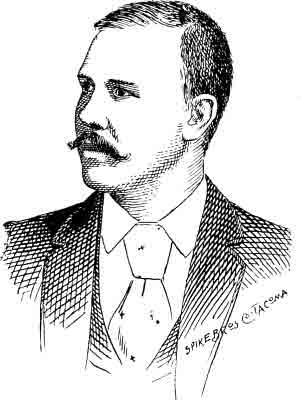
[Pg 123] Gustaf Lindberg, a representative business man of Tacoma, was born in Vermland, Sweden, November 22, 1865, received a careful education, and at the age of fourteen embarked in business as clerk in his native place. In 1881 he chose the national capital of Sweden for his abode, where he obtained a clerkship with the firm of C. A. Schweder. Being of studious nature and industrious habit, he worked faithfully during day, and attended school during evening, thus acquiring a store of useful learning and applicable experience. In 1889 he left the land of his birth for America, locating in Tacoma, where he found employment with the grocery firm of Forbes & Wose. After two years of service with this company, he joined his brother John in the grocery business, now a leading establishment on the corner of Eleventh and G Streets. Mr. Lindberg is a prominent factor in the Swedish-Lutheran church and a worthy member of the Tacoma Chamber of Commerce, and in all respects an honored citizen and a true gentleman.
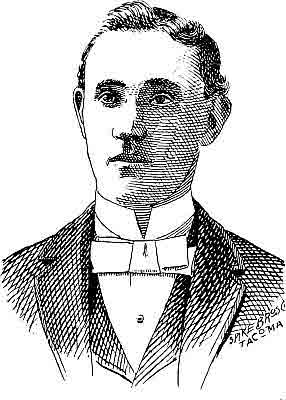
[Pg 125] S. Samson.—For being a young man few have displayed steadier habits and more business capacity than the congenial proprietor of the People's Hotel and Restaurant, 913 Pacific Avenue, Tacoma. He was born in Ostra Torsa, Kronoberg, Sweden, November 29, 1869, where he enjoyed the training of splendid school facilities. In 1888 he crossed the stormy Atlantic, and selected Tacoma for his permanent location. During his early time in the New World he shared the vicissitudes of circumstances, ever converting his leisure to useful acquirements. The language was foreign to him, but being of docile aptitude this obstacle did not long impede his progress, soon he could handle the English tongue with ease and fluency. Business seemed to be his forte, which he embarked in some years ago and has followed with marked success. He is a member of the Tacoma Chamber of Commerce and owns considerable real estate in the city. Mr. Samson has always been awake to the interest of the Pacific, and especially his own town. He is a worthy citizen and enjoys the respect of the people.
Societies—Press—Prominent Citizens—Churches
A number of Scandinavian societies have sprung into existence in Tacoma the last two decades. The Valhalla, a Swedish fraternal and beneficial organization, was the first that blossomed into prosperity. It was organized December 15, 1884, with G. F. Linquist, president, H. Nyman, vice-president, H. Ohlin, secretary, W. P. Sundberg, treasurer, R. Bomen, financial secretary, Charles Berg, master of ceremony. Only few signed the constitution at its early launching, but has gradually increased in membership to 125 in good standing. A praise-worthy band, known as the "Swedish Valhalla Military Band," was founded by the society to grace its work with sweet music.
The Norwegians organized a lodge of similar nature as the Valhalla, baptized, The Ancient Order of Vikings, which, too, embarked with a handful of supporters, but through perseverance and wise management bloomed into one of the best Norwegian societies in the state. The aim of this compact is broad and laudable, being like that of the I. O. O. F., or other secret organizations of high standard. The Vikings was born in 1892 with the following hard workers in the lead: John Blaauw, Thomas Knudson, G. O. Sande, Ed. Haug and Sam Haug. [Pg 127]
The Danish Brotherhood was instituted in March, 1889, with fifteen members, and has flourished these years remarkably. At present it has sixty on the roll, with a flowery adjunct, the Danish Sisterhood, which has tendered the fraternal order kind assistance.
Haabet, a Norwegian literary society, has grown in vigor and number, and is proving valuable to literary culture. The incumbent officers are: Con. Bjorklund, Prest., Jacob Slippern, V. Prest., H. Hansen, Sec., John Blaauw, Treasurer, G. O. Sande, Librarian, Hans Tokelsen, Editor.
The Norden, I. O. G. T., founded in early days, wrought out many disagreeable obstacles, and planted seeds of moral purity, but the panic of recent years scattered the prop of support to the four wings of the world, and the pretty flowers that wont to grace the hall found pleasure in other spheres. Week after week the lodge trembled on flirting arms, which little by little gave heed to other diversions, and death on wooly wings devoured the civilizing factor.
The Scandinavian Temperance Society lived through many years of gnawing resistance. From it floated mighty words of wholesome advice, but friends of the alcoholic hell, robed with smiling garbs of infernal warp, plucked the sweet blooms of future hope, and planted in their souls the stings of ruin. As days wore away, the poisonous influence from the saloon den bewitched the sprightly stripling and the hoary hair, and the temperance workers, the noblest of heroes, were [Pg 128] too few to feed the fire of interest, and the organization withered and died.
The Scandinavian press, of Tacoma, is growing into popularity. The first Scandinavian newspaper on record in the city was, "Tacoma Budstikken," a Norwegian-Danish weekly, founded in December, 1899, by P. O. Bergan, but enjoyed only a short period of sunshine. The Tacoma Tidende was launched July 5, 1890, and ripened into a Norwegian-Danish state paper. From infancy it was in the hands of Dirk Blaauw who bid fair at journalism, but a year ago it was transferred to his brother John who has steeped it with journalistic fire, comparing in merit with the big eastern weeklies. It takes a man of a congenial nature, ability and "push" to make journalism a success, and these qualities manifest themselves every day in the editor of Tacoma Tidende.
John Blaauw was born in Bergen, Norway, 1868, but when an infant of two years he went with his parents to Christiania, where he resided till he reached the age of seventeen, save two and a half years he spent in Edinburgh, Scotland. In 1887 he emigrated to America, making Seattle his destination. Right after the great fire he embarked in Scandinavian journalism, and has practically followed it ever since.
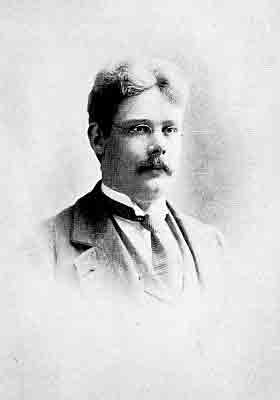
[Pg 130] No man is better informed of the condition and natural resources on the Pacific coast than Editor John Blaauw. He has traveled in every county from British Columbia to the Golden State. He has made Tacoma Tidende an honor to the coast and a valuable source of information to thousands of people throughout the United States. He is of a genial disposition, kind and serviceable. Though always busy, yet glad to receive visitors, and willing to impart all possible knowledge. Much of his time is consumed in replying to letters concerning the Pacific country.
Tacoma Tribunen, a Swedish weekly of considerable merit, was brought to light in April, 1890, by the Swedish Publishing Company. T. Sandegren was installed as editor, and has ever since filled the chair with credit.
T. Sandegren was born near Halmstad, Sweden, in 1858, where he enjoyed the benefit of a good common school education. At the age of twenty he graduated from Lund College, and three years later took the degree of A. B. at the University of Lund. Journalism was his forte which he embarked immediately after graduation. In 1883 he crossed the Atlantic for the United States, locating in Minnesota, where he obtained a position as teacher in the Military School at Fort Snelling. In 1889 he migrated to Seattle, and in company with N. P. Lind organized Vestra Posten. The following year he was appointed editor of Tacoma Tribunen, and three years later assumed the ownership of the paper, which he is conducting with marked ability.
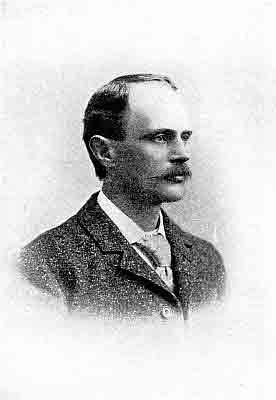
[Pg 132] No man is better informed of the condition and natural resources on the Pacific coast than Editor John Blaauw. He has traveled in every county from British Columbia to the Golden State. He has made Tacoma Tidende an honor to For half a decade or more he represented "Skandinaven" on the Pacific.
A word concerning Scandinavian churches may not be out of place at this point. In spite of a new country and adverse circumstances, nine of them pierce the air of the City of Destiny. There are three Lutheran churches, two Norwegian-Danish, and one Swedish; two Methodist churches, one Norwegian-Danish, and one Swedish; two Baptist churches, one Scandinavian and one Swedish; a Swedish Mission church, and a Scandinavian Free church.
To the south of Tacoma smiles the village of Parkland, the stronghold of the Norwegian Synod, where the Pacific Lutheran University stands as a pride to the place.
The aim of the institution is to give thorough instruction in the various branches taught in the public schools and [Pg 133] academies, including science, art and music. It is operated under the banner of the Norwegian Lutheran Synod, and sound Christian principles are made the basis of all the work. Rev. B. Harstad may be rightly called the "Father of the Institution," and Prof. N. J. Hong deserves the appellation "Faithful Manager."

Few cities during the short longevity of eight years have blossomed like Everett. In 1891 it sprang into life midst the greatest of stir and excitement, and has ever since enjoyed the presence of healthy sunbeams and steady prosperity. Everett is the county seat of Snohomish county, spread over a pleasant stretch of land between Snohomish river and a beautiful bay of the Sound, affording an excellent fresh-water harbor and an equally laudable salt-water haven.
The city has a population of about eight thousand, many of whom are Scandinavians. John Brue was among the early pioneers, and one of the founders of the Norwegian Lutheran church located at that place. For years he was engaged in business in Everett, but disposed of his interests to take possession of a nice farm near Stanwood.
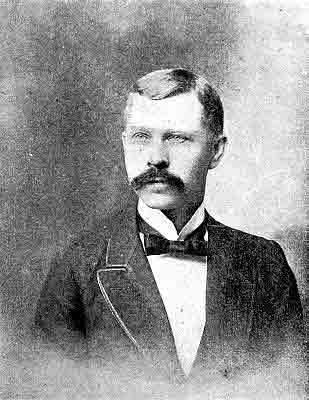
[Pg 136] T. T. Enger, a bright business man, merchant tailor, was also one of the first to establish himself in the embryo city. He was born in Hoff, Solor, Norway, 1864, but moved with his parents to Aasnes when one and a half years of age, where he received his early education, graduating from the public schools at fifteen. His father, also, T. T. Enger, was a prominent citizen and manager of H. Schulze's estate, the largest in that part of Norway. Young Enger left his native seat for Christiania to learn the tailoring trade, and in 1882 emigrated to America, arriving at Madison, Wisconsin, September 22, where he remained two years working at his trade. His next move was to Minneapolis, and in 1891 migrated to the Pacific, settling in Seattle, Washington. Shortly after his arrival he was married to Miss Maria Olson, a worthy lady of Norse ancestry. The transient fame of Anacortes startled the country, and thither Mr. Enger went to engage in business, but in January, 1892, sold out and removed to Everett, where he is conducting a fine tailoring establishment. Mr. Enger is a man of energy and "push," reliable and respected. He is a prominent member of the Knights of Pythias, and holds notable standing in the republican party.
Few men have passed through the trials that L. P. Elvrum has, the genial landlord of Everett. He was born in Stordalen, near Trondjem, Norway, 1858, where he received a good education. At the age of nineteen he went to sea, and was dashed uninterruptedly on the pitiless waves for four years. Three times he weathered the North Cape. In 1881 he sailed for America, spent one year in Minnesota, then journeyed to the Pacific, settling at Stanwood, Washington. He sought the forest for employment, worked four years at logging, then embarked in general merchandise in Silvana, and immediately received the appointment of postmaster. In 1889 he was married to Miss Martha Beck, an estimable lady of Cedarhome. When Everett commenced to bespeak business prospects, Mr. Elvrum sold out his interests at Silvana and went thither to start a hotel. He is the proprietor of the "North Star," one of the most respectable taverns in the city. Mr. Elvrum is a man of business nature, social and congenial, honest and a true gentleman. He has had many ups-and-downs, but his motto has been, "Try and continue trying and you will succeed at last." A motto that every man ought to drink into his soul for ready application in the various turns of life.
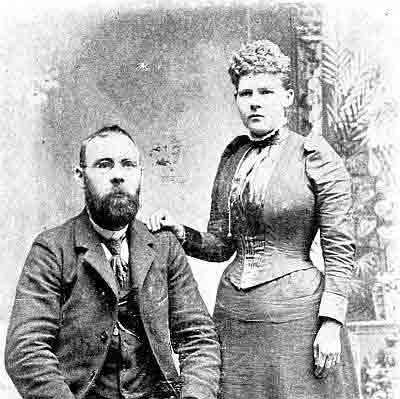
[Pg 138] There are also other Scandinavians in Everett who shine in business and social circles. A. O. Solberg is a leading jeweler, and O. Alseth a genial clerk and a popular member of the Lutheran church; Martin Dahl is a well-known merchant tailor, and J. A. Johansen a progressive grocer.
Everett has within its limit two Scandinavian churches, a Norwegian Lutheran, previously alluded to, and a Scandinavian Methodist, which was built in 1893. Rev. P. M. Ellefsen, a Methodist missionary, visited Everett, 1892, and the following year organized a congregation of ten members which now numbers thirty. Rev. O. Heggen was the first appointed minister to occupy the pulpit, who was succeeded by the eloquent Rev. O. O. Twede.
A Young Peoples' Society was organized some years ago which has grown healthy and vigorous; at present it has a membership of forty.
Among the leading members of the Methodist congregation we find E. A. Olson, Swede, L. Carlsen, A. Thompsen, H. Helgesen, and Mrs. H. Helgesen, Norwegians.
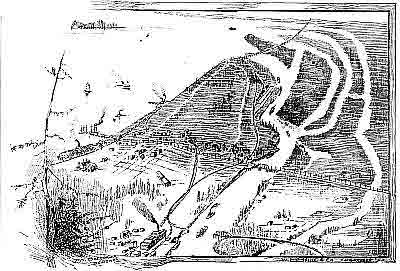
Stanwood is the largest Scandinavian community in the State of Washington, situated in Snohomish county, on a delta-like angle, where the Skagit and the Stillaguamish rivers meet to mingle their blue volumes. A navigable tongue of the Sound ripples up the flat, where daily steamers gracefully ride for the proud city. To the east and west from this thriving villa a panorama of inexhaustible fertility spreads out before your eye, dotted with quaint dwellings, here and there flecked with rich orchards, and slowly sweeps up forming what is generally termed highland, where a Swedish colony smiles with flowery gardens and beautiful farms.
Stanwood compares in magnitude and importance with the eastern Scandinavian settlements, but differs vastly from them in spirit. Here is more life, more freedom, and English the prevailing language, especially among the younger folks.
In 1870, the time that Eller Graham, a native of Norway, disembarked at the mouth of Skagit river, a white man was a curiosity. Doubtless Graham was the first Scandinavian to seek the wilderness for a nestling place, though it is probable that Martin Toftezen, who landed on Whidbey Island twelve years prior, had made a reconnoissance of both Skagit and Stillaguamish rivers.
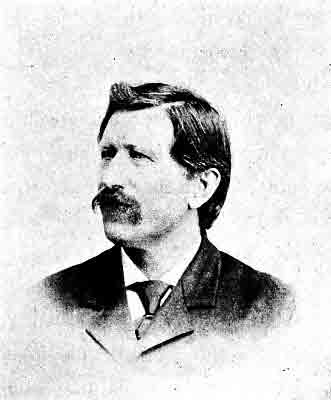
[Pg 142] Sivert Guligson Brekhus threw anchor where the Stillaguamish disembogues its waters, 1873, but made his permanent habitation ten miles up the river. Two years later O. B. Iverson made his appearance as government surveyor, and almost simultaneously N. P. Leque, Nils Eide and A. Danielson landed in fair-sized canoes. These pioneers had the sagacity and foresight to unfold the future, and bought three hundred acres of land together. The first named, O. B. Iverson, was elected to represent Snohomish county in the territorial legislature, where his keen intellect made palpable impressions. He now resides in Olympia, and is an active member of the government surveying staff.
N. P. Leque is a highly respected citizen, a gentleman in the true sense of the word. He was born in Kinservik, Hardanger, Norway, May 8, 1848, but moved with his parents to Ulvik when two years old. After receiving a good common school education, he entered the normal school in Voss, where he graduated with honor in 1865. The following year he engaged in teaching, but abandoned it after two years of successful experience. The 11th of April, 1868, he was married to Miss Maria Lindebrekke, a lady of fine intellect and noble aims, and the same year sailed for America, settling at Vermillion, Clay county, South Dakota, where he embarked in farming. The smiling Pacific created a desire for another journey, and July 31, 1875, he paraded the streets of Tacoma, with his family. He made a perambulation of the country, and in 1876 located on a beautiful island, which bears his name.
In 1886 he was elected county commissioner, served with [Pg 143] distinction for two years, and declined renomination. He has been and is a valuable member of the Lutheran church of Stanwood, and has always sought to enhance the best interests of the community, morally and otherwise. For some time he has been president of the Stanwood Co-operative Creamery.
Peter Leque, a close relative of N. P. Leque, is doubtless one of the most popular Scandinavians on the Pacific coast. He was born in Norway, but came to America in his early years, and received a fine education in the common schools and at the State University of Washington. Ever since 1875 he has resided on Leque Island, hard by Stanwood. He is a man of a grasping mind and elevated thoughts, a hard worker and a faithful representative of the common people. A man that the public has picked out to fill responsible positions on the merit of honesty and ability. In 1888 he was elected county surveyor, in 1892 county assessor, and in 1894 county auditor.
O. K. Melby, proprietor of Melby Hotel, and a man of intelligence and fine training, has shared the struggles of pioneer life. He was born in Norway, came to the coast 1875, made a visit to Stanwood, and the following year located in the embryo villa permanently, being the first Scandinavian to engage in hotel business in this part of the state.
John Brygger, A. J. Brue, Peter Gunderson, Christian Joergensen, Martin Larson, Iver Egge, C. Toftezen, L. T. Land, O. J. Finley, Ole Ryan, Thomas Brue and John Brue are among the early settlers and the most prominent citizens. [Pg 144] They are all independent farmers and potent factors in the upbuilding of the country.
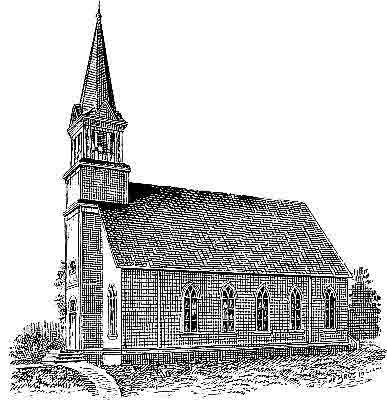
The Norwegian Lutheran church of Stanwood is the oldest of the Lutheran churches on Puget Sound. It was organized twenty-three years ago by Rev. L. Carlson, and has enjoyed the services of Revs. Emil Christensen, P. Isberg and C. Joergensen. At present it is in charge of Rev. L. C. Foss who has done much for Christianity and the Lutheran doctrine. He is a friend of the young people as well as of the old, the guiding spirit of the Young People's Society and a talented musician.
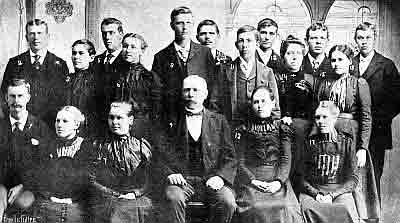
[Pg 146] The Norwegian Singing Society is the pride of the community, and has scattered laurels of accomplishment along the Sound. On many occasions it has been called to Seattle and other places to cheer and entertain the people with sweet melodies.
The progress and success of the Scandinavian business men of Stanwood are well known. S. A. Thompson's establishment affords credit to the town, and Knud Knudson's drug and jewelry store compares nicely with similar concerns in the larger cities. B. Willard, the popular dairyman, hails from Denmark. His energy and keen intellect have always been at willing option for the good of his adopted country. A. Tackstrom, the genial postmaster, was born in Sweden, and has been of practical usefulness to his city. Edward Foss traces his birthplace to Norway, but has resided for years in Stanwood. He is a mechanic by trade, and a gentleman in demeanor. H. C. Anderson, the wealthy Klondiker, who resides near the city, is a conspicuous factor, especially in agricultural developments. The genial photographer, J. T. Wagness, has gained a standing among the people as a man of ingenuity in his chosen profession. Biographical sketches of men who have worked themselves up in an honorable way would doubtless be of interest to the readers. Such men as S. A. Thompson, Knud Knudson, and others merit a place among the most prominent Scandinavians on the Pacific coast.
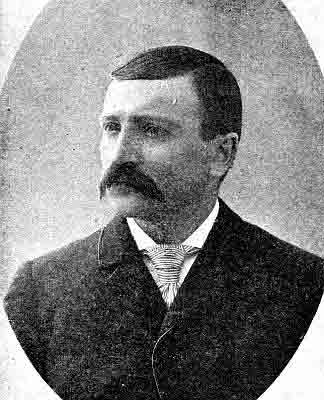
[Pg 148] S. A. Thompson was born in Norway, 1864, where he received a splendid school education. In 1880 he arrived in America, locating at Story City, Iowa, remaining two years, then chose Moorhead, Minnesota, for his habitation. After a stay of four years in this city he migrated to Holdstead in the same state where he spent two years. Up to this time Mr. Thompson had been engaged in sundry occupations, clerking and manual labor, always devoting his leisure to the acquirement of an education. In 1888 he landed in Stanwood, and immediately embarked in business. For some time he was connected with shingle mills, entered Irvine's store, clerked five years, and May 1, 1895, assumed possession of the whole firm. Mr. Thompson is a man of genial nature, kind and social, at the same time energetic, which his business career plainly emphasizes.
Knud Knudson, the gifted jeweler and drug merchant, was born in Modum, Norway, 1864. After learning the watchmaking trade, he sailed for America, arriving in Valley City, North Dakota, 1885, where he worked at his trade one year. He was touched by reports from Caselton, packed together his effects and moved thither, engaged in business for two years, then took another trip, viz., to Chamberlain, South Dakota, but one and a half years sufficed at this place. Washington was now the absorbing question, and in 1890 located in Stanwood, and established the first jewelry store in the city. In 1896 he launched into drug business in connection with his already lucrative engagement. Mr. Knudson is a leading business man, always busy and attentive, reliable and respected.
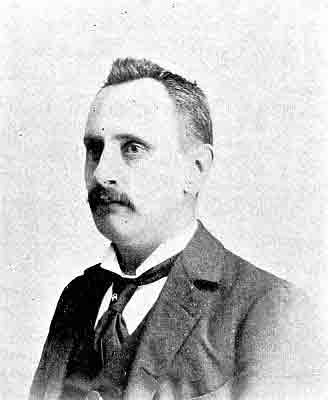
[Pg 150] N. M. Lien is one of the typical Norwegians on the Sound—honored and intelligent—wealthy and conscientious. He came to America in 1866, spent eleven years in Minnesota, twelve years in North Dakota, then journeyed to Stanwood, Washington. He owns a magnificent farm, running pretty nigh into the heart of the city, golden with waving cereals and smiling flowers, and spreads out in an easterly direction.
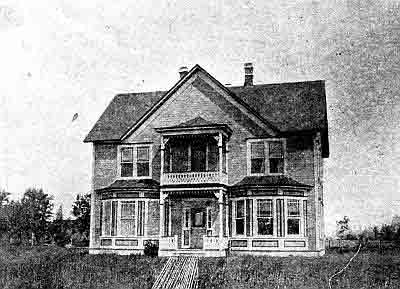
[Pg 151] Olaf Rydjord is a lucrative farmer, one and a half miles up Stillaguamish river from Stanwood. He was born in Norway, came to Stanwood, 1890, with little or no means. Now he possesses a beautiful farm, and ranks among the prosperous Scandinavians. He is also a man of honor and ambition.
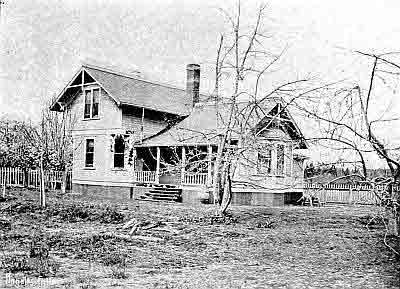
One of the most laudable institutions in Snohomish county is the Stanwood Co-operative Creamery, it bespeaks the thrift and standard of the farmers. This enterprise originated with Rev. C. Joergensen, who deserves the applause of the whole community for his indefatigable energy. Mr. Joergensen is an ex-minister of the Lutheran faith, armed with a liberal education and divers experience. He held the presidency of the Stanwood Co-operative Creamery until his election as commissioner of Snohomish county.
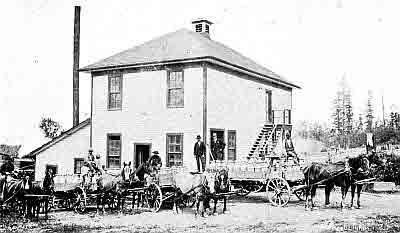
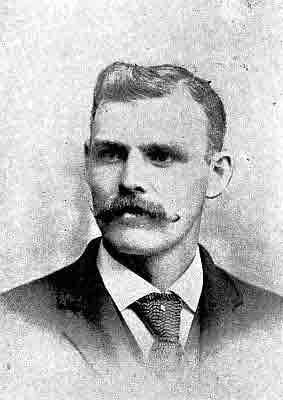
[Pg 154] The Stanwood Co-operative Creamery has carried away many honors since 1895, the date of its commencement. It took the first prize, 1896, at the County Fair of Pierce county, held in Tacoma, also the first prize in Ellensburg, 1898, at the State Dairy Association. The output of butter has gradually increased, at present averaging about eighteen thousand pounds per month.
D. G. Bennie, Jr., manager of the Stanwood Co-operative Creamery, has engraved his good will on the hearts of the community. His business methods are commendable, emphatic of honesty and ability. He was born in Boston, Massachusetts, December 14, 1866, came to the Pacific coast, 1885, embarked in logging and farming, and in the spring of 1898 he was elected to his present position, which he has filled with entire satisfaction.
M. O. Coltom, superintendent of the butter-making department, is a worthy gentleman, who has filled his calling with credit to himself and the association. He was born in Toten, Norway, forty-three years ago, came to America, 1866, and to the coast, 1887. He has been connected with the creamery since its infancy, and has always been vigilant to the best interests of the enterprise. John Lund, also a native of Norway, has been a faithful assistant to Mr. Coltom, for years he has served in his present capacity with honor.
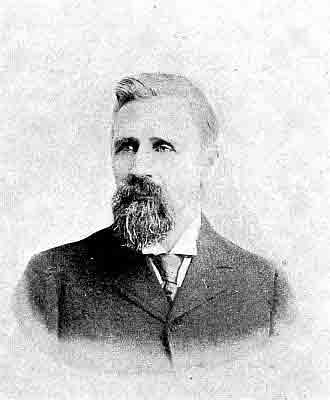
[Pg 156] Stanwood is surrounded by thrifty Scandinavian farmers, the earliest have already been mentioned. Some of the more recent who have added laurels to agriculture are: Ole Naas, Peter Peterson, T. K. Logan, O. Alseth, Anton F. Anderson, Otto Coltom, Oluf, John and Gunder Otterson, Engbret Olson, Peter Holte, N. B. Thomle, Louis Christiansen and others.
Stanwood, as stated before, is largely populated with Scandinavians; in addition to the number previously noted we find many good citizens, namely: Herman Hafstad, connected with the Stanwood Hardware Company, Carl Ryan, clerk in Eureka Grocery, Fred Ryan, clerk in Thompson's store. Peter O. Wold and Ivar Opdal are representative Norwegians, well liked and respected. Bert Gunderson is an intelligent young man; the members of the Norwegian Singing Society rank among the best of young people, Saul Olson, Ole Mellum, Elias Brue, Sam Lovik, Halvor Anderson; John Melkild, Peter Brandall and others bespeak Norse integrity. A. B. Klaeboe, now a gold seeker in Alaska, was once a leading business man of this city. Twelve years ago he established the first drug store in Stanwood, which he managed with notable success for a number of years. He was born in Norway where he graduated from college with distinguished scholarship.
The Stillaguamish valley, spreading out for a considerable distance on both sides of the wandering river, which starts in the green-clad hills, looming up in the southeast, and leaps gracefully downward to the city of Stanwood, where it disembogues its waters, is a fertile plain, running through the forest for twenty-five miles, adorned with royal farms and three happy villas—Florence, Norman and Silvana. Thirty years ago this noble stretch was the home of wild beasts, but now settled by a jolly populace. Here the Scandinavians found a field that hit their fancies—plenty of work and rich soil.
The first Scandinavian to brave this wilderness was Sivert Guligson Brekhus, a native of Voss, Norway, who emigrated to America, 1862, spent eleven years in the east combatting for success in divers avenues, and in 1873 entered the mouth of the Stillaguamish river. He proceeded up the stream which was choked with angry snags and stubborn logs. No less than four jams impeded his progress. Mr. Brekhus has been a man of unusual strength, and possessed of a heart that knew no fear. On one occasion, in early days, a red savage attacked him in Stanwood. Mr. Brekhus was alone which gave his heathen aggressor, surrounded by a bloodthirsty horde of his race, lust for blood, and, like a devil in flames, seized a manageable piece of timber and sought to convert the white man to a heap of jelly. The brave Vossing approached him [Pg 158] and the following words burst from his lips, "Hvis du inhji parsa dig ska eg slaa huvu ini majin paa dig." The red skins understood the depth of his voice, and skulked away.
Ah! picture to yourself the hardship! All the provisions had to be canoed from Seattle, and four boats were required to reach Mr. Brekhus' ranch. Many struggles did this valorous pioneer pass through. Once he carried a barrel of herring on his shoulders over the four jams, and at another time a big cook stove.
Iver Furness, father of John Furness, the Norman merchant, has also partaken of the trials and difficulties common to pioneer encounters. As early as 1879 he dates his first peregrination on Stillaguamish river. Like other adventurers he endured many days of hardship, anxiety and worry. Supplementary to the toil for subsistence, the savages cast chilly currents through his soul. The Sauk Indians, ravaging in Skagit county, were dreaded like devils. One day the report reached the home of Iver Furness, while relishing a healthy dinner, that the Sauks were paddling up the river for a bloody massacre. Mrs. Furness was thrown into a trance of fright, rushed for the door with knife in hand to take refuge in the woods. Johnny, her son, grabbed the fire-lock to protect their home, but, lo! it was only an Indian scare.
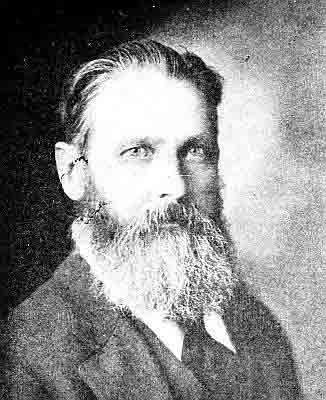
[Pg 160] Iver Johnson, the pioneer merchant of Silvana, and the popular county commissioner, was born in Opdal, Norway, 1848. After graduating from the public schools, he took a course in the higher branches of learning by private tuition, and in 1869 sailed for the United States, selecting South Dakota for his first abode in the New World. In 1875 he took another step westward, locating at Port Gamble, Washington, where he worked in saw mills for two years. Returning to South Dakota, he was married to Martha Haugan, a charming young lady, but to his sorrow she withered for the grave after four years of matrimonial happiness. He recrossed the Rocky Mountain the same year, settling in the Stillaguamish valley, worked in logging camps and cleared land for some time, then embarked in general merchandise at Silvana, the first store in the Stillaguamish valley. He sold out his interests at Silvana to accept a clerkship in D. O. Pearson's store in Stanwood, which he abandoned after five years of faithful service to assume the position as deputy county auditor. In 1898 he was elected to the office of county commissioner of Snohomish county in which capacity he is now working with credit to himself and to his constituents. He was married the second time, in 1887, to Miss Maria Funk, an accomplished lady of Norse extraction.
Halvor Helvy, an intelligent farmer near Silvana, figures among the first pioneers. He was born in Norway, and came to Stillaguamish from South Dakota, 1878.
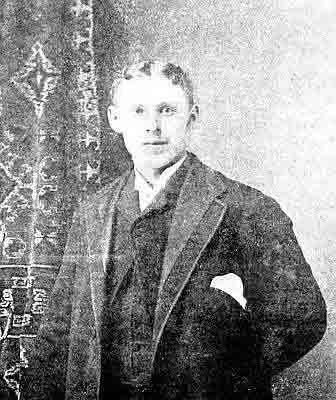
[Pg 162] E. A. Hevly, the popular merchant of Florence, and one of the brightest business men on the Sound, was born in Opdal, Norway, February 28, 1866, came to America, 1878, and the same year landed on the Pacific coast. After receiving a common school education, he took a course in the state University of Washington. For years he was employed as clerk, but in 1891 became the sole owner of a large mercantile establishment, which he is conducting with marked ability. Mr. Hevly is a congenial man, honest, honorable and energetic.
John I. Hals, proprietor of Hals' shingle mill, located across the river from Florence, is a true type of Norse manhood. He was born in Norway, came to Stanwood, 1882, worked four years in a saw mill at Utsalady, and in 1889 bought from Munson, Johnson and Company a shingle mill standing one mile east of Stanwood, the first Scandinavian shingle mill in Snohomish county. Cedar timber was getting scarce and a change of location became advantageous. To effect this he sold his mill, bought eighty acres of land further up the river, and built a new mill, of which Mr. Hals is the sole owner. The author does not believe in plowing up the field of exaggeration, and so far as the personage in question is concerned no occasion affords an opportunity. The men working for Mr. Hals speak in more eloquent language than my pen. In a word, Mr. Hals is a gentleman, kind, intelligent and generous.
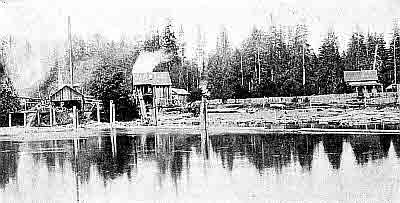
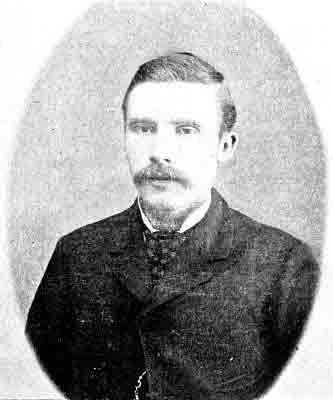
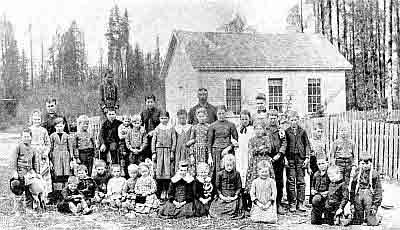
[Pg 166] Round Florence are also other Scandinavians who have scattered light of melioration. Flowery meadows and royal dwellings join to pronounce their industry and rank of intelligence. Mr. Myro is an early pioneer and a thrifty Dane. Taral Larsen is a prosperous farmer, a native of Norway, who has shared the struggles of frontier life. Ed Hanson, also a Norwegian by birth, has been a valuable factor in the community, especially in the promotion of education. As we proceed up the river we find an unbroken settlement of well-to-do Scandinavians, who sought the wilderness to make homes. Engebret and Sven Stenson, Sivert and Rasmus Knutson and S. Erickson were among the first. L. O. Stubb, a prominent farmer and a man of ability and influence, has given valuable service to the community. He has been one of the foremost men to look after the interest of education. He was born in Norway, came to Dogfish Bay, Washington, 1880, and the same year settled near Norman.
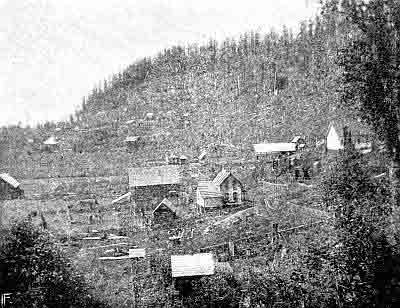
Iver N. Prestlien, the pioneer of Prestlien Bluff, so [Pg 167] named to perpetuate his memory, was born in Norway, and settled on his present location, 1885, when the inviting slope was a gloomy forest. He has done much for the upbuilding of the community, educationally and otherwise.
John Furness, previously alluded to, an able business man, in company with Mr. Engdahl, at Norman, has spared no energy for the good of the public schools and the country in general. Andrew Estby, O. B. Lee, H. Hereim and others have also lent willing assistance.
Cornelius N. Langsjoen, Elias Tangen, Julius Lund, Andrew Prestlien, John Ingebretson, and others have contributed heart and hand to better frontier gloom. Two fine Lutheran churches, one at Silvana and the other across the river, emphasize the moral and intellectual standard of the people.
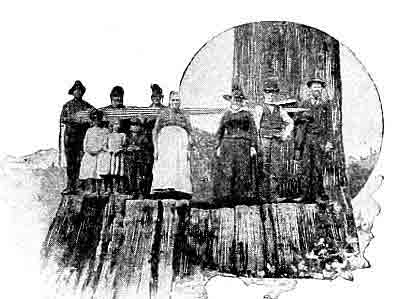
Three miles east of Stanwood smiles a beautiful villa, which fifteen years ago received the baptism Cedarhome. It seems as though Nature in her wisdom long, long ago took special pains to prepare a plot for this smoothly sloping panorama. If it had been whittled out to order for a quiet, sober and intelligent people nothing more consistent could have been expected.
In early days a dense forest clothed this spot, and savage brutes ruled unrestrained. But some forty years ago the irascible agent—fire—resolved to show his power, which he did like an unchained demon. He sent his red flames from tree to tree, consuming big and small, save some stubborn giants, which remained black skeletons in melancholy loneliness. Bears, cougars, wild-cats, and other inhabitants of the forest picked up their feet and with lightning speed sought the mountains for refuge.
The once rich sylva, where evergreen and foliage were wont to join in sweet choruses, was now a charcoal desert with a few angry monsters frowning in the air, squealing and cracking to the breath of every breeze.
Years elapsed, the sun sent down his gentle beams, the clouds unlocked their opulent stores, and the parched earth drank her fill, and gave birth to shoots that blossomed into a carpet of green.

[Pg 170] Ah, all a change! the chilly appearance of yesterday is today sunshine. A fresh sylva, besprinkled with flowers, smiles to our joy, and birds wheel on happy wings, pouring their hearts into dulcet music, and loving zephyrs come to woo the tender growth.
In 1877 Arn Olson, a native of Norway, made a perambulation of the country lying east of Stanwood with the object in view of finding a suitable bit of ground for a home, arriving where Cedarhome now smiles he resolved to pitch his permanent lot among the green bushes. Almost simultaneously, Martin Larsen, a Norwegian by birth, braved the interior, remained one year, then located on the Stanwood flat, three miles north of the city.
It was not until the following year that Cedarhome commenced to echo the presence of white men. Before only a faint sound now and then rose to indicate human existence. Among the first who anchored their fortunes at this place was John Anderson, who left Sweden in 1869 for Chicago, but was soon seized with a whim to see and try other climes. Both South and West were fields of attraction, and to satisfy his romantic nature he took in the whole country. In 1876 he stood in the city of Seattle gazing with wonder at the novelties about him. A reconnoissance of Salmon Bay hit his liking, but shortly after settled on 160 acres of land at Cedarhome, then called Burn.
Mr. John Anderson may be rightly termed the father of Cedarhome, and yet, though his flowing beard has silvered [Pg 171] to a halo of snow, he contributes the fall of his life to daily duties.
August Anderson has passed through experiences not dissimilar to those of John Anderson. He, too, was born in Sweden, came to America in his prime of life, and in 1879 cast his lot in the forest. He has shared the ups-and-downs of frontier struggles, always a faithful supporter of the Methodist church.
Andrew Gustaf Bergquist made his appearance a few months subsequent to the arrival of John and August Anderson. He is a native of Sweden, where he spent his boyhood, but like thousands of others sought the New World. Mr. Bergquist has been alert to the interests of the community, educationally and morally. For years he has been a member of the school board.
Now, gloomy loneliness! where art thine "blues and longings?" No jollier crowd beneath the blue roof of heaven than a bunch of pioneers. Buoyant in spirit, strong at arms, the forest fell to their axes. Trails were swamped and cabins erected to their comforts.
Cohorts of eager land-seekers from all climes perambulated wealthy vales and green-besprinkled knolls, and among these was P. O. Norman, who had landed in Seattle, 1881, but spent two years reconnoitering the coast ere he located at Cedarhome.
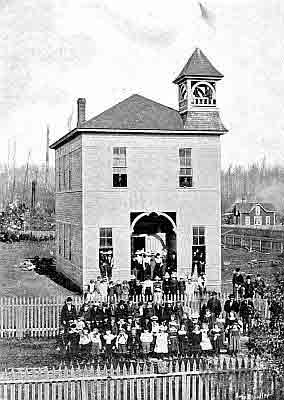
[Pg 173] Love of work and progress is the spur of a new country. As population increased so did the burden of responsibility augment. Morality and education could not be neglected. Mr. Norman contributed from his fund of experience and learning, acquired in his native country, Sweden, and in the state of Nebraska where he had served as school trustee and county commissioner.
A craving had manifested for a union of worship, and in 1883 a Methodist congregation was organized, forming a circuit with Seattle. Rev. Andrew Farrell was called as pastor, who expounded the gospel in the two places on alternate Sundays. In 1888 Mr. Norman drew up a petition citing for a separation from Seattle and the formation of a circuit with Skagit. The petition was granted by the bishop, and the Rev. O. E. Olander was secured as clergyman.
Absolute independence has always been the longing of the soul. The congregation was now ripe for a divorce from Skagit, which was granted, 1890, and a beautiful church was built, which stands as a pride to the village. The Methodist doctrine has proven relishing, and credit is due to the following faithful workers: P. O. Norman, John Anderson, August Anderson, Andrew G. Bergquist, John Lovegren, N. G. Carlson, W. M. Anderson, N. O. Ekstran, Magnus Haglund, Andrew Olson and John Olson.
The most promising feature of a church is a healthy, wide-awake Young People's Society. Not only as an instrumentality to invite to share the glory in Heaven, but to cultivate literature and music, to cherish each others peculiarities and trend of thoughts. These societies are not exclusively [Pg 174] for the blooms of a few springs, often lingering fall with hoary hair wields the guiding staff. The most eloquent and active supporter of the Young People's Society at this place is John Lovegren, though he has blushed about twelve summers of matrimonial happiness. Of course, others have scattered sunbeams, and without their appellation the narrative would not be complete. William M. Anderson has filled the presidential chair, and Misses Minnie Johnson, Annie Anderson, Alice Carlson, Annie, Lizzie and Emma Yngve, Minnie Bergquist, Mabel Peterson, Annie and Jennie Olson, and Mrs. Edith Dacke have graced the organization with sweet music and poetry. Messrs. Andrew Bergquist, A. P. Dacke, Charley Edeen, John Carlson and Walter Jensen have contributed able assistance.
The Cedarhome Literary Society, which has been in existence about three years, has scattered literary light through the community. The organizers and star members are: E. C. Nicklason, J. H. Swanson, Thomas Munson, J. C. Jensen, Charley and Axel Ek, Eric, Mannie and Eddie Lindstrom, Iver and Simon Olson, Jacob and Andrew Settre, Andrew Olson, Kettle Levison, Lewis Sandstrom, Eddie, Eli and Ove Eliason, and Andrew Anderson. The willing participants among the ladies are: Misses Minnie Nicklason, Mary Jensen, Hilma and Hulda Ek, and Josie Settre.
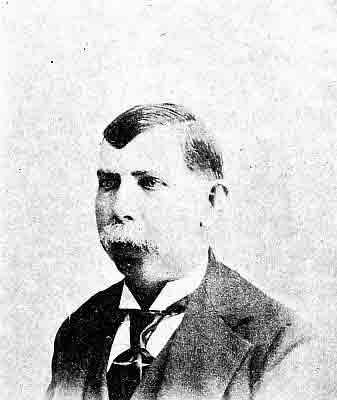
[Pg 176] No pioneer has endured more hardship than Mathias Munson, a native of Norway. For thirty-five years he dashed on the merciless waves from port to port, finally making his home in the wilderness of Washington. Six-and-four scores of years rested on his shoulders at his death, one year ago, yet strong and lively. He was an example of courage and endurance, and is said to have saved many lives during his sea-faring years.
Ole Jensen, born and educated in Denmark, bid farewell to his mother country seventeen years ago, landed in Seattle and shortly after settled at Cedarhome. "To do and dare" was his motto; the huge forest fell, and a nice home smiles to his comfort. John Olson also arrived at Cedarhome about seventeen years ago. He is a native of Sweden and has devoted most of his time to farming, being a prominent member of the Methodist church.
Cedarhome is no longer a nucleus of yearning bachelors, but a thrifty town surrounded by gardens and meadows. Three religious denominations are strongly represented, the Methodists, previously mentioned, the Baptists and the Lutherans.
G. Nicklason, a pioneer of the Skagit valley and a popular merchant of Cedarhome, was born in Sweden, but left his native country at the twilight of manhood. After filling sundry vocations of hardship in the east, his attention was drawn to the Pacific, settling in the Skagit valley, 1876, where he labored hard clearing land and farming. A beautiful farm in that locality bespeaks his industry. In 1890 he moved to Cedarhome to engage in general merchandise—business of his liking—in which he has proved himself a master. The fertile [Pg 177] forest awakened acute calculation in his mind, and in company with Carl O. Walters started a lumber factory capable of turning out both lumber and shingle. Mr. Nicklason is a man of energy and ability, honest and strictly attentive to business.
Carl O. Walters, G. Nicklason's partner in lumber manufacturing, was born in Gottland, Sweden, May 27, 1855, where he received his education, graduated from the public schools at the age of fifteen. For three years he served in the navy of Sweden, spent two years traveling in his native country for the purpose of studying the natural resources and the varied conditions. The sea was a pleasing attraction to him; visited all the countries of Europe, and at the age of twenty-two embarked a ship for the New World, sailed for some time on the Atlantic coast, rounded Cape Horn, and landed in the Golden Gate, 1877. He dashed on the waves up the coast as far as British Columbia. After eight years of navigation he stept ashore, engaged in carpentry, worked in Seattle and British Columbia, most of the time as contractor. In the latter place he spent considerable time prospecting for coal, employed by the Vancouver Coal Co. Twelve years ago he located at Cedarhome, turned his attention to farming served as deputy county assessor, and gradually drifted into lumber and shingle business, an occupation congenial to mechanical ingenuity, which is Mr. Walters' forte, being born with mechanical aptitude as well as with social and conversational endowments.
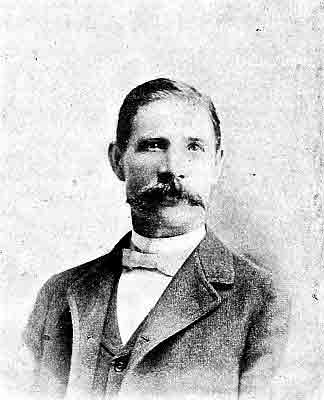
[Pg 179] L. G. Hanson, the present deputy county assessor, was born in Skone, Sweden, 1855, emigrated to America in early manhood, 1882. After some years of ups-and-downs in the south, he planted his fortune at Cedarhome, nine years ago, and has ever since taken an active part in public improvements. He has been a stanch supporter of the public schools and an advocate for good roads. For years he has served as school director and road supervisor, and in 1899 he was appointed deputy county assessor.
E. O. Yngve, a man of affluence and influence in his native country, Sweden, crossed the salty billows for America ten years ago. He has been alert to the interest of his adopted country, and always glad to usher the welfare of his people to the front.
Frank A. Peterson is likewise a man cut out for frontier life where energy and strong arms are required. He is a native of Sweden, but came to South Dakota in his early days, stayed there for some years, and in 1886 landed in Seattle, and two years later joined his countrymen at Cedarhome. He has been awake to the interest of the public schools and the welfare of the community in general; for years he has been a member of the school board. His brother John is also a good citizen.
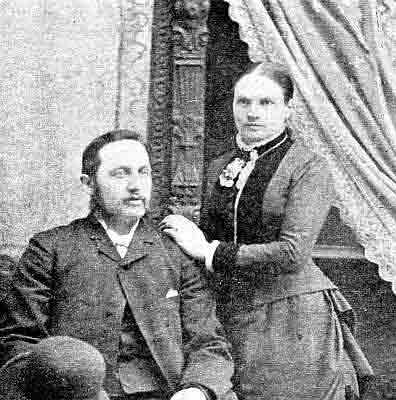
[Pg 181] John Ek, too, belongs to the category of frontier soldiers who delight in converting the forest into fields of gold and smiling gardens. He was born in Sweden and came to Cedarhome, 1890. Round the village live a number of good citizens and industrious farmers; viz., Oluf Johnson, Sivert Wold, Rasmus Settre, K. K. Erdahl, N. O. Lindstrom, P. G. Johnson, Olof Anderson, Levi Levison, Ole Johnson, Robert Johnson, P. L. Anderson, Ole Husby, Erik Johnson, P. M. Arentzen, C. P. Hemmingsen, A. Evenson, B. Evenson, and others. Aaron Larson, a native of Sweden, who resides on a pleasant ranch about three miles east of Cedarhome, is a highly accomplished musician. His daughter Cora is likewise displaying extraordinary talents for divine strains.
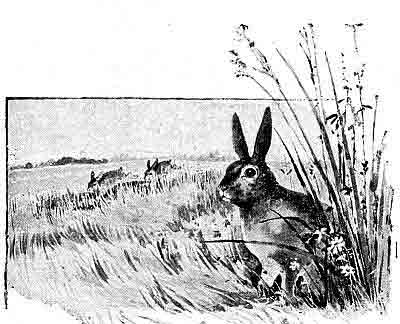
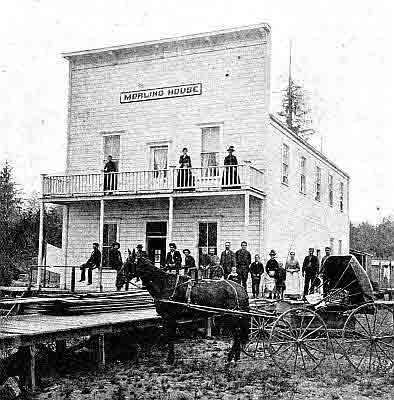
The Skagit valley is a stretch of inexhaustible fertility, commencing at the mouth of the river and running northward [Pg 183] for scores of miles, and spreads out, east and west, into a plain beautifully embellished with proud farms, and mostly populated with Scandinavians. Six miles up the river rests the town of Fir, a bustling village, surrounded by a rich farming community. Ole J. Borseth is the leading business man of the town, who located here, 1883, and in 1891 engaged in general merchandise. He is a native of Norway, where he was bred and educated.
Knut H. Opdal, also born in Norway, arrived in 1888, and shortly afterward embarked in hotel business. He and his wife are representatives of Norse simplicity and integrity, imbued with love for their native country, and patriotic and loyal to the stars and stripes.
J. F. Anderson was one of the first settlers. He was born in Sweden, left his native land during the early summer of maturity, and located in the state of Iowa. In 1874 he landed in Port Townsend on Prince Alfred, and immediately proceeded to the Skagit valley, settling on North Fork. After a year of hard work he moved with his family to Seattle in order to give his children the advantages of good schooling. At the close of six years they returned to the Skagit, locating on South Fork, where Fir now stands. In 1883 a flood rushed over the country, swept along everything save some stubborn buildings, the crop was destroyed, and havoc spread in all directions. "Never give in," says the sage, which is applicable to Mr. and Mrs. J. F. Anderson. "Onward" was their motto, and two beautiful homes shine to their honest efforts— one at Seattle and one at Fir. Their children, who are now combating with the turmoils of the world, are well educated and highly respected. Jennie is married and lives in Seattle; Axel and Eric are connected with the Polson and Wilson Hardware Co., established in Seattle and La Conner; Victor is married to an esteemed lady, Miss Marie Paulson, and runs the farm; Minnie is postmistress at Fir and a teacher of music, Howard sleeps in the grave, and Otto stays home.
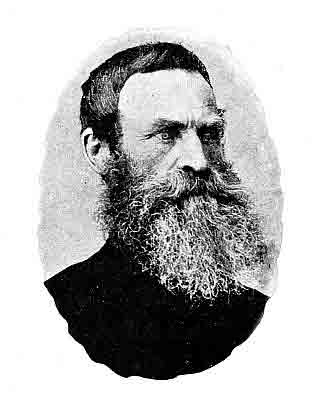
[Pg 185] Andrew N. Crogstad, a leading citizen, a man of honor and intelligence, has shared the difficulties of the frontier. He was born in Trondhjem, Norway, 1852, received a good schooling and in February, 1872, left his fatherland for Dunn county, Wisconsin, and five years later disembarked in the Skagit valley. He turned his attention to logging and farming. A beautiful farm, surrounded by a wealthy orchard, stands as a pride to his energy. He has seen days of romantic awfulness, once hazardous, but now pleasing reminiscences. The flood has always been a dread, and many frights has it caused. One Fourth of July Mr. Crogstad went to Fir to celebrate the independence of his adopted country. The morning was bright and prognostic of a pleasant time. Returning home during gray twilight, a seething, rolling sound floated down on the breeze, and ere they realized the cause, water crept up to their feet. The ladies were frightened out of their wits and took to screaming, which seems to be their only alternative in time of danger. Mr. Crogstad and his companion understood the predicament, slung the ladies on their backs and pranced home, thus avoiding a disastrous outcome.
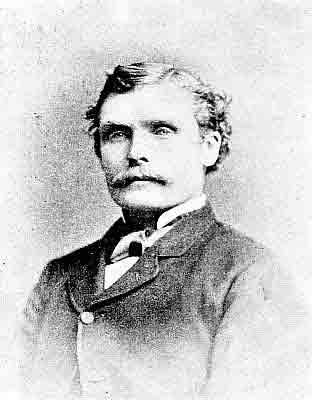
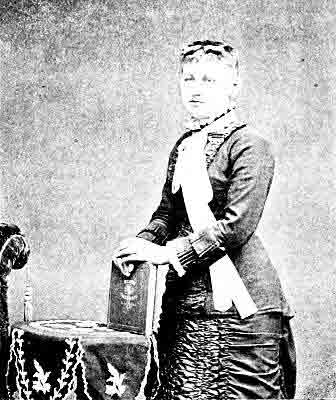
[Pg 188] In 1887 he was married to an estimable lady, Miss Wilhelmina Augusta Jensen, born in Scleswig, Holstein, 1863, of Danish parentage, and came to America, 1875. They have five children, four girls and one boy; Alvina, Emma, Lottie, Clara and Maurice.
One not accustomed to pioneer life in the forest can hardly conceive its many romantic features. To live on the bank of a big river, rolling and moaning in tireless monotony, and huge trees praying and howling to the wroth of the wind, and frisky brutes gamboling in wild frolics, and Indians skulking in stealthy moods, is something awe-inspiring.
On a jolly morning, Charles Mann, the pioneer merchant of Fir, reconnoitered in the woods behind his store, and to his awe, stumbled into a hideous infernal, which was afterwards discovered to be an Indian cemetery. Ah, terror! hundreds of Indians were hanging in the trees, some nude skeletons, some with the hearts torn out of their mutilated frames; owls and crows were sailing on evil wings among the ghastly dead, and horror seemed to reign in every bush. This finding startled the whole town, and into the woods rushed young and old; flames sprang into the air and swept through the forest, and the dead Indians dropped from a hanging hell into a burning one.
The flood of 1887 spread consternation throughout the [Pg 189] community. The water leaped down from the mountains in savage fury and scattered the dykes to the briny billows, busy hugging the beach below. Houses set sailing down the valley in tipsy joltings, and logs went chasing each other in mad bewilderment for the sea. The deluge broke into Mann's store and rose to the depth of three feet. Mr. Mann was alone in the store, and to drive away loneliness grabbed the fish line and commenced angling, caught two mountain trouts by the counter. During the same flood Mrs. Mann was sitting in the Fir Hotel chatting with some friends, and before they were aware of the enormity of the water they went sailing on their chairs around the room.
In and around Fir live a number of Scandinavians who have witnessed frontier encounters, but their early struggles have become pleasing revels for a fanciful imagination, as the late years have crowned their efforts with success. Olof Polson, a son of Sweden, and at present mayor of La Conner, was along with the first brigade of pioneers that scattered themselves in the valley. Ole Lonke, born in Norway, and a prosperous farmer, about a mile from Fir, located here over twenty years ago. Ole Johnson, also a native of Norway, has resided here over two decades, and Peter Olson dates his arrival still further back.
Among the more recent settlers who have proved valuable exponents are: John Hanson, August Johnson, Even Handstad, John Kragnes, Ole Kvande, Knut Lange, Sivert [Pg 190] Sande, Ole Olson, Lars Engen, G. O. Branstad, Lars and Nils Danielson and Elik Johnson.
Proceeding up the river we find many Scandinavian pioneers who rank among the most prominent citizens; viz., Peter Egtvet, Ole N. Lee, Frank Tollefson and Magnus Anderson. At Skagit City, N. Erickson, Alfred, Edwin and Herman Johnson are representative farmers who have spared no time for the upbuilding of the country. Rev. John Johnson, presiding elder of the Swedish Methodist church, who resides at this place, is a noted man, being a gifted rhetorician and an able pulpit orator.
To the east of this happy village spreads out a fertile plain which sweeps up into a proud elevation, called Pleasant Ridge, the home of the old pioneer, Charles John Chilberg, and two of his sons, Isaac and James. Here we find also a number of other Scandinavians who have shared the burden of early struggles.
Four miles up the river from Skagit City stands the jolly city of Mt. Vernon, which has within its boundary many prominent men from the shores of Norway and Sweden. The two leading merchants of the city are Norwegians—Louis Foss and N. J. Moldstad.
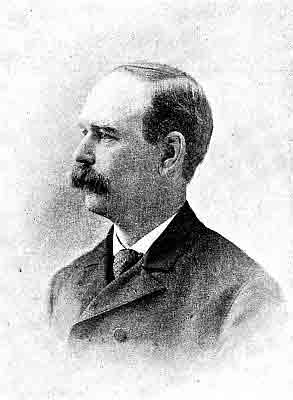
[Pg 192] Louis Foss is well known throughout the Pacific country, being the first Scandinavian state senator in Washington. He was born in Norway, 1849, received a liberal education, graduated from college at nineteen, and shortly after emigrated to America, locating in Wisconsin. He worked four years as scaler of logs on Chippewa river; went to the Dakota Black Hills during the excitement of 1875, where he remained two years working in the mines. From whence he went to Zumbrota, Minnesota, to assume the management of a large merchandise store, in which capacity he labored faithfully for five years. His name had acquired a favorable clang among the people and the city of Fosston was christened to his honor. In 1887 he disposed of his interests in Minnesota and moved to Tacoma, Washington, where he engaged in real estate, and entered mercantile business at Mt. Vernon and Buckley. Five years later he was elected state senator from Pierce county, and served his state with honor for four years. At the expiration of his senatorship he removed with his family to Mt. Vernon, where he now resides, and owns a big mercantile establishment, The Fair. He has also a large store of similar kind in Anacortes which his eldest son is managing. Mr. Foss is not only a man of business aptitude, but also a man of character, fidelity and honor.
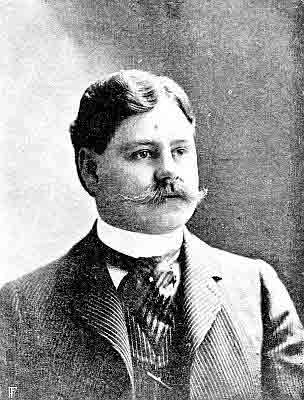
[Pg 194] N. J. Moldstad merits the appellation of "progressive business man." He was born in Vestre Toten, Norway, April 1, 1863, where he obtained his early education. July 2, 1876, he sailed for America, settling at De Forest, Wisconsin, and shortly after entered his brother's dry goods store. His next move was to Lanesborough, Minnesota, where he secured a clerkship with a big mercantile firm, afterwards assumed a similar vocation in Minneapolis. From whence he turned his attention to North Dakota, embarking in store and banking business for himself. The Pacific had become a fascinating field, sold out, and crossed the Rocky, locating in Tacoma, where he established a shoe store. Another journey seemed to emphasize business progress, disposed of his establishment in Tacoma and engaged in dry goods and clothing in Mt. Vernon. The last years he has also given due consideration to the Alaska gold fields, being interested in several claims around Dawson. In 1893 he took a trip to Europe, traveled in England, France, Germany and the Scandinavian countries. In 1898 he was married to an estimable lady in Mt. Vernon, and spent his honeymoon journeying in California, the Southern states and New York, visited Washington and shook hands with President McKinley. On returning took in Chicago and other large cities. Mr. Moldstad is a republican in politics and has been delegate to county and state conventions, but has scoffed at the idea of seeking any office. He is like Mr. Louis Foss, of the same city, in being a true gentleman, respected and respectable.
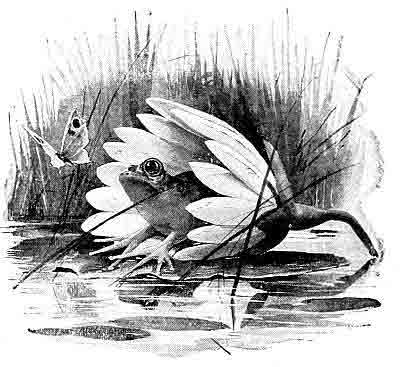
It is but few places where nature has been so kind and lavishing with her store of grandeur as in Bellingham Bay. Sweet in music, the happy ripples dance to kiss the pebbled borders of the twin cities—New Whatcom and Fairhaven. Above the din of their tumults stands the white-haired Mt. Baker with a snowy hood drawn down his broad shoulders, throwing glimpses of awe over a gay landscape. About four miles from these sister cities smiles Lake Whatcom, where living gondolas ride on its glassy bosom from shore to shore.
In early days Scandinavians gave heed to this happy land of verdure and songs. About forty years ago they visited the bay and reconnoitered the country. Everson, a Norwegian by birth, was among the first pioneers. The last ten years a number of Norwegians, Swedes and Danes have located in both New Whatcom and Fairhaven, and rank among the leading business men of the two cities.
O. B. Barba, a prominent lawyer of New Whatcom, born in Norway, but raised and educated in Wisconsin, came here, 1890, and has steadily invited the confidence of his countrymen and the people in general.
Ole Oien has the honor of being the first Scandinavian elected to county office in Whatcom county. He was born in Toten, Norway, came to Bellingham Bay several years ago, and at the last election was chosen to the office of county clerk. He is a man of energy and intelligence, and may rise to higher trust and honor in the gift of the people.
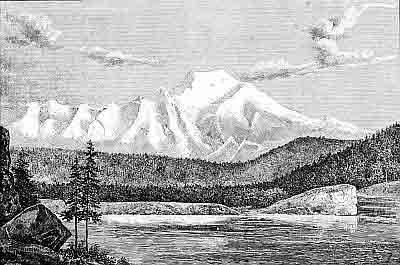
[Pg 197] Olaf Udness and Charley Erholm, the former born in Norway and the latter in Finland, emigrated here, 1889. They are proprietors of the Pacific Steam Laundry, and prominent in business and social circles.
Thomas Dahlquist, a native of Sweden, and one of the leading grocers in New Whatcom, landed in Bellingham Bay, 1889, and has gained the esteem of all the people. His wife was born in Norway and is regarded as the foremost Scandinavian lady in the city.
John Larsen, owner of the only first-class music store in Bellingham Bay, is an able business man. His wife is an influential member of the Norwegian Synod church.
A. G. Wickman, born in Sweden, cast his eye for the first time over Bellingham Bay, August 2, 1889. He is a man of keen intellect and sound judgment, and possesses the air of a true gentleman. He is a merchant tailor and enjoys a lucrative business.
P. Osberg and George Martinsen are well-known contractors, the firm being Osberg and Martinsen. My pen would not be true to these gentlemen without the following assertion: "Osberg and Martinsen's ingenious work has commanded technical honor to the Scandinavians."
P. Jacobsen, a son of Denmark, is likewise a man of mechanical aptitude. He is a skillful blacksmith and a true gentleman.
In Fairhaven we find many popular Scandinavians, men who are held in high esteem by the people. Rev. T. J. Moen [Pg 198] is one who enjoys the respect and love of the community. He was born in Talgen, Norway, where he received his early education. In 1879 he graduated from Hamar Seminarium, among the highest in scholarship, and two years later emigrated to America, where he secured a position as teacher of religion. His ambition was to be a minister of the gospel, and in 1889 entered Augsburg Seminarium, spent one year in the academic department, then stept into the theological college and graduated with honor after three years of diligent study. He came to New Whatcom seven years ago as pastor of the United Lutheran church, and has met with success in his responsible vocation.
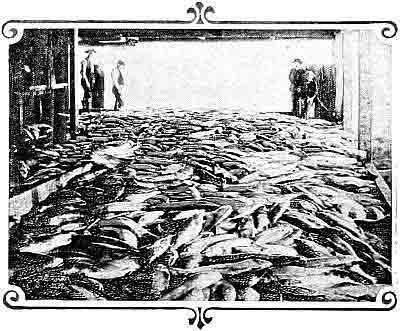
Mrs. T. J. Moen, a lady of intelligence and fine training, was born in Rollag, Numedal, Norway, and came to America while a lass of six years. At the age of nineteen she was united in holy matrimony to Rev. T. J. Moen. She is an earnest worker in the Sunday school, likewise attentive to her fireside duties. [Pg 199]
J. M. Scarseth and Chris. Grue, proprietors of the Wisconsin Grocery, rank as the foremost merchants of Fairhaven. Scarseth was born in Wisconsin of Norwegian parents and Grue in Norway. They came to Bellingham Bay, 1889.
Henry Christian Engeberg is a Dane by birth, a fine scholar and a careful druggist. He is a graduate of the University of Copenhagen and came to Fairhaven ten years ago.
B. W. Benson, a real estate dealer, is a man of true Norse type, social, honest and intelligent. He was born in Norway, and came to Bellingham Bay, 1889.
A. L. Stenvig, the only merchant tailor in Fairhaven, traces his birthplace to Norway. He came to this city ten years ago, worked for others at first, but now owns a paying establishment.
Gust. Linden, a native of Sweden, O. M. C. Henning and Chris. Keel, born in Norway, have been in Fairhaven since 1890, and have worked themselves up from meager circumstances to affluence and honor. They are representatives of the industrial classes, possessed of mechanical ingenuity and prominent members of the Lutheran church.
Mrs. Henning, wife of O. M. C. Henning, is a woman of learning and elevated character, being an energetic worker in the United Lutheran church. Her oldest daughter, Mrs. Richard, is a popular teacher in the city schools of Fairhaven.
AT POULSBO BAY.
[Pg 201] On a sunny slope slowly rising from the merry sheet of golden water, stands the town of Poulsbo, in Kitsap county, about twenty-five miles northwest from Seattle. A smiling tongue of the Sound is rippling into the land, and here and there a green nose is pushing itself into the brine as trying to contest with the elements of the deep. Sweet melodies spring from the laughing ripples, and sail on the wings of lazy zephyrs to cheer the ears of the village. This musical bay is a natural abode for Scandinavians who are wont to the songs of happy fjords. As early as 1875, Ole Stubb stranded his skiff on the shore of this vocal stretch for permanent nestling. He was born in Norway, and has witnessed days of divers struggles, interlaced with days of sunshine.
A year later Fred Landstone pinned his lot to a piece of land about ten miles east of Poulsbo, and in 1883 Jorgen Eliason was attracted to the bay, and has ever since been instrumental in shaping the affairs of the community. He is a native of Norway, landed in Michigan, 1870, and has proved himself a man of honor and intellectual capacity, a true representative of Norse simplicity and manhood. I. B. Moe arrived simultaneously and has been a potent factor in a multitude of enterprises.
Torge Jensen, a prominent citizen of Poulsbo, a man of integrity and intelligence, was a member of the early brigade of pioneers. He was born in Norway and came to Poulsbo from South Dakota. He has been one of the foremost men to look after the interest of the place, educationally and otherwise.
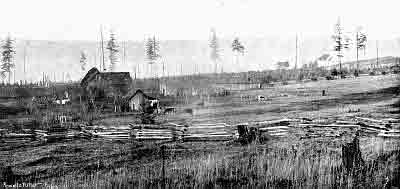
[Pg 203] Nils Olson, also of Norse birth, merits a footing among the first settlers and deserves the encomium due a man of honesty and noble aims.
Among the business men of Poulsbo, Adolph Hostmark carries the honor of being the first merchant. He erected a store fifteen years ago, and conducted a general merchandise establishment until his death. Some years subsequent Lars Christensen engaged in mercantile business and his career has been an uninterrupted success, characteristic of industry and uprightness.
Lars Christensen was born in Thisted, Denmark, 1844, received a common school education, spent years on a large plantation as foreman and assistant manager. In 1872 he emigrated to America, selecting Marquette, Michigan, as his favorable place for dwelling. He worked on the docks and at other manual labor until 1875, when he migrated to Brookings county, South Dakota, where he engaged in farming. After twelve years of varied experiences on the Dakota prairies he turned his attention to the Pacific, arriving in Poulsbo, 1887, where he embarked in clearing land and ranching. A beautiful place in the heart of the smiling villa bespeaks his pluck and industry. In 1893 he launched into general merchandise, which he later converted into a dry goods store. Mr. Christensen has always been a prominent member of the Lutheran church and a true republican in politics, and in every walk of life a loyal citizen, honest, intelligent and respected. He was married to an estimable lady in Denmark. They have one son, C. P. Christensen, who was born in Denmark, 1868, and came to America with his parents. He has inherited the traits of a noble father and mother and ranks among the best of men, endowed with a fine intellect and moral integrity.
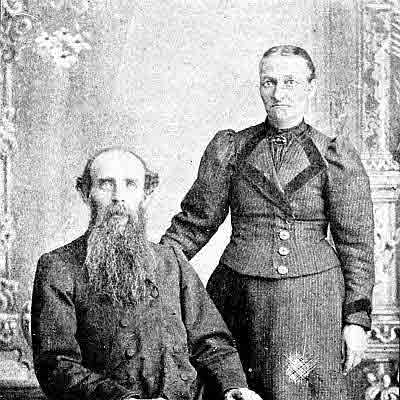
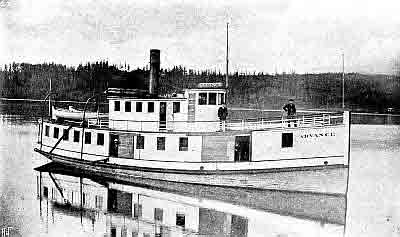
Poulsbo has achieved what no other community on the coast has ventured to do. While the villa was in its early embryo a knot of pioneers organized and incorporated the Poulsbo Wharf and Storage Company, and built a substantial dock and warehouse, accessible by any steamer.
The first steamer that cleaved the bosom of the deep between Poulsbo and Seattle was the Quickstep, owned by John J. Hansen, who later built Hattie Hansen. But to burst the chains of monopolized transportation, and to usher pecuniary [Pg 206] relief to the toiling farmers, a sprinkling of valorous hearts, headed by Thomas Hegdahl and Nils Olson, perfected the organization of the Poulsbo-Colby Transportation Company, and built the beautiful steamer—Advance—which plies daily between Poulsbo and Seattle.
The following are officers of the Poulsbo-Colby Transportation Company; J. A. McPherson, President; Peter Erlandson, Vice-president; C. P. Christensen, Secretary; L. Christensen, Treasurer; J. W. Russell, Manager.
Poulsbo has had its religious upheavals but aside from these fanatical revolutions it has scattered seeds of Christian principles. A fine Lutheran church tops a pleasant hillock as evidence of this statement. Rev. I. Tollefsen was summoned to the bay as the first gospel expounder who unveiled the gems of the Old Book according to Augsburgian theology. Into his footsteps dropped Rev. H. Langeland who is yet a beloved representative of the Supreme Being in the charming town of Poulsbo. Many of the trance reports which have taken speedy wings for other climes have not been absolutely true. In justice to Rev. H. Langeland my pen cannot evade the declaration that he is a gentleman and a true Christian.
The Orphans' Home, organized eight years ago, looms magnificently on a nicely trimmed knoll, overlooking a wizard landscape. Rev. Tollefsen is the father of the institution, but the people in general have given to it their unreserved support.
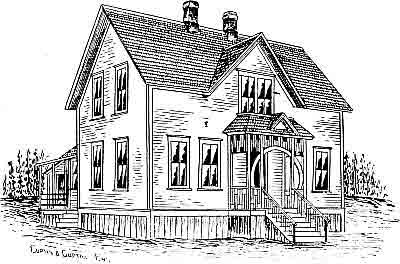
During recent years, Poulsbo has made quick strides forward, no less than four stores and two hotels combine to signalize its progress. Langeland and Eliason are thrifty grocers; Alf Hostmark conducts an establishment of similar nature; Thos. Hegdahl is a prosperous furniture dealer and L. Christensen a dry goods merchant. The farmers around Poulsbo have tendered ready hands to any project tending to advance the interest of their villa. Steiner Thoreson and T. Paulson have been active exponents in the divers avenues of melioration, and A. V. Paulson, an ex-teacher of the public schools, has never been lagging when a new enterprise was to be rooted. Ole Thompson, A. Talakson, A. O. Hagan, Chris. Williams and Ole Nelson figure among the early settlers. They are thrifty farmers and have contributed their time and energy for the good of the community. Nils Atleson, though recent colonist, has shared the burden of pushing the place to [Pg 208] the front. He is the leader of the United Lutheran church, and a man of intelligence and pluck. K. G. Steen and others have also proved worthy factors where skill and energy shine pre-eminently.
The country surrounding Poulsbo is mostly peopled with Scandinavians. Pearson, across the bay, is a thriving community, principally settled with intelligent Swedes, who have spared no time to make their terra firma attractive.
Breidablik, the home of the Paulson family, is an inviting place. As we recede further from Poulsbo we come to Seabold where many Scandinavians breathe happiness and prosperity. A short distance from this village lives C. Sanders, who was born in Sweden and came to Port Madison thirty-five years ago. There are also other old settlers as A. M. Anderson and Chas. Olson. Across a pleasant elevation of land slowly falling to the sea we find the flower-besprinkled Rollingbay, where some early pioneers contend happily with the wild billows of the world. Martin Sunnes, Dona Falk, Andrew Sornsen, Nils Peterson, Peter Bye, T. Siverson, Mrs. Hanna Johnson and C. Johnson were the first adventurers.
There are other scattered Scandinavian settlements, but let it suffice, for this volume, by taking a step to Shelton, Mason county. Here we find the well-known Professor G. B. Gunderson and other prominent Scandinavians. Prof. Gunderson has served the people of his county as superintendent of the public schools and as representative in the legislature, with marked ability and success.